#prince louis christening
Explore tagged Tumblr posts
Text
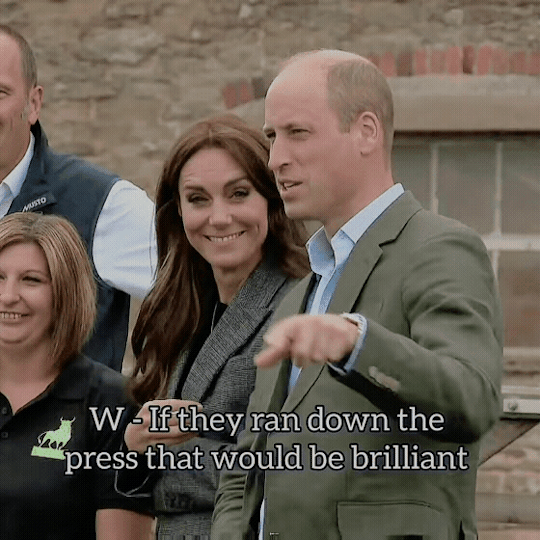

LIKE WILLIAM, LIKE LOTTIE ♡
The Prince of Wales and Princess Charlotte have some thoughts about the Royal Rota and their intrusions || 2023 - 2018
#prince of wales#the prince of wales#princess catherine#princess charlotte#princess charlotte of wales#lottie wales.#lottie cambridge.#william wales.#my gifs#gifs#louis's christening#WeRFarmingMinds23#prince william#the princess of wales#catherine wales.#royals#british royal family#british royals#brf#royalty#royal#catherine middleton#kate middleton#british royalty#duchess of cambridge#14092023#royalty edit#royaltyedit
247 notes
·
View notes
Text




Louis Ducruet and Marie Ducruet shared this picture on their Instagram page of themselves with their daughter Victoire Ducruet, Prince Albert II of Monaco, Princess Stéphanie of Monaco, Pauline Ducruet and Camille Gottlieb on the occasion of Victoire's christening, in Monaco -September 7th 2024.
📷 : Louis Ducruet & Marie Ducruet on Instagram.
#louis ducruet#marie ducruet#victoire ducruet#prince albert#prince albert ii#princess stephanie#princess stephanie of monaco#pauline ducruet#camille gottlieb#monegasque princely family#monaco#2024#october 2024#christening#christening 2024#victoire ducruet's christening#royal children#my edit
9 notes
·
View notes
Text
I adore the Prince Lestat era because Loustat are so settled in their marriage and absolutely insufferable to all those around them. The way vampire meetings never go as planned because Louis and Lestat are too busy loudly thinking about one another and interrupting everyone’s concentration.
The way everyone avoids eye contact and pretends to be deaf when they hear them somewhere in a secluded corner, just fucking because it’s their right and they’ve waited so long to be together like this. Also because they’re possessive of one another. Yes, they are definitely possessive.
Oh, it’s so good because I can only see IWTV 2022 characters in my head. How glorious.
The magical and expensive balls? So many balls thrown and for some reason the hosts retire early or simply disappear every single time. No questions are allowed.
The endless supply of beds being purchased because the frames have been broken?
Christening every single room of the chateau plus the grounds? Absolutely.
Literally being so disgustingly in love? The best part.
195 notes
·
View notes
Text
Pink is for Boys
"Pink or Blue? Which is intended for boys and which for girls? This question comes from one of our readers this month, and the discussion may be of interest to others. There has been a great diversity of opinion on this subject, but the generally accepted rule is pink for the boy and blue for the girl. The reason is that pink, being a more decided and stronger color, is more suitable for the boy, while blue, which is more delicate and dainty, is prettier for the girl." ~ The Infants' Department, June 1918

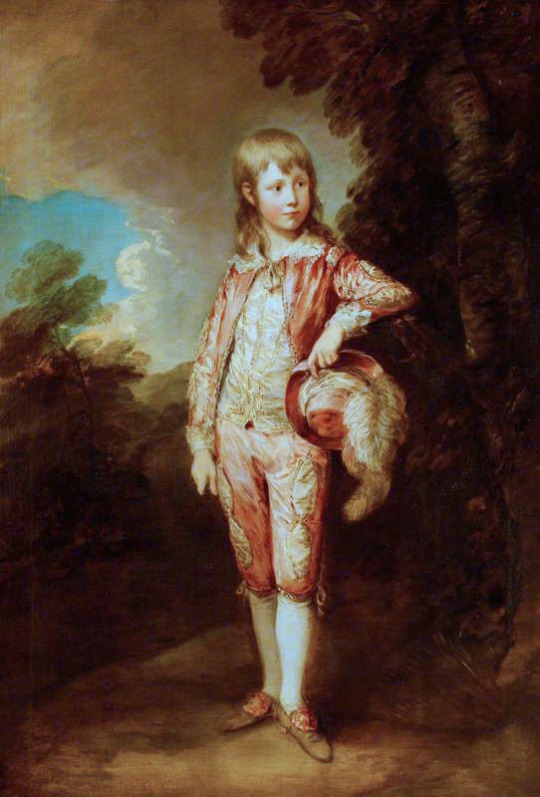
[Left: The Blue Boy, oil on canvas, c. 1770, by Thomas Gainsborough.
Right: The Pink Boy, oil on canvas, c. 1782, by Thomas Gainsborough.]
Pink is for girls and blue is for boys. But it hasn't always been this way. Colour coding infants as a way of denoting gender was popular in 20th century America. The problem? Pink and blue? Which is for boys and which is for girls?
In 1927 TIME Magazine asked ten of the "leading stores that sell baby equipment" which colour was for which gender. Four stores responded pink for girls and blue for boys; Macy's (Manhattan), Franklin Simon (Manhattan), Wanamaker's (Philadelphia) and Bullock's (Los Angeles). Five stores responded pink for boys and blue for girls; Best's (Manhattan), Marshall Field's (Chicago), Filene's (Boston), Maison Blanche (New Orleans) and The White House (San Francisco). Curiously Halle's (Cleveland) responded that pink was for both boys and girls.
This debate would continue and it wasn't until mid-20th century that pink for girls and blue for boys became firmly cemented in western culture.
However the idea of colour coding infants dates back to the 19th century. According to La cour de Hollande sous le règne de Louis Bonaparte in 1808 in Holland pink was used to announce the birth of a girl and blue a boy. In March 1856 Peterson's Magazine (Philadelphia, USA) advises that the ribbon on a christening cap should be blue for a boy and pink for a girl. On the 23rd of July 1893 the New York Times writes that for baby clothes it's "pink for a boy and blue for a girl!"

[The Oddie Children, oil on canvas, c. 1789, by William Beechey, via North Carolina Museum of Art.]
During the latter half of the 18th century one of the most popular outfits for young children, regardless of gender, was a white dress with a coloured sash tied around the waist. Pink and blue being the most popular colours, although other colours were worn as well. It would be tempting to assume that the colour of the sash indicated gender but there isn't clear evidence that this was the case. The Oddie Children (above) depicts Sarah, Henry, Catherine, and Jane Oddie. The three girls are all wearing white dresses; two with a blue sash one with a pink sash. We also see Henry Russell (bellow left) wearing a blue sash and Prince William (bellow right) wearing a pink sash.
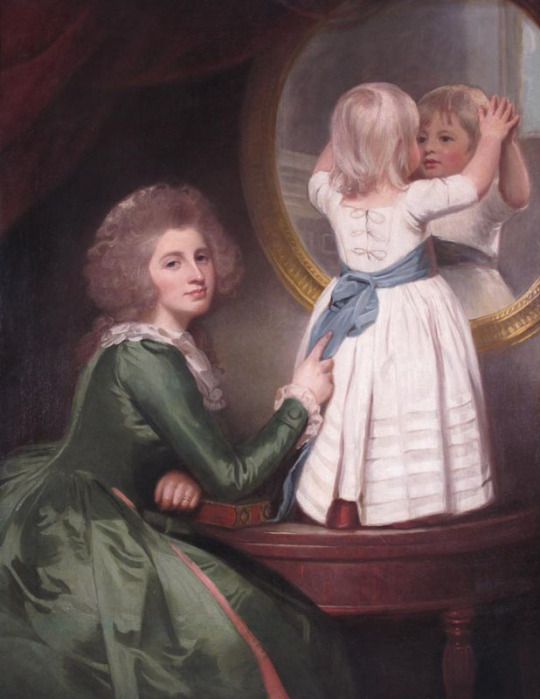
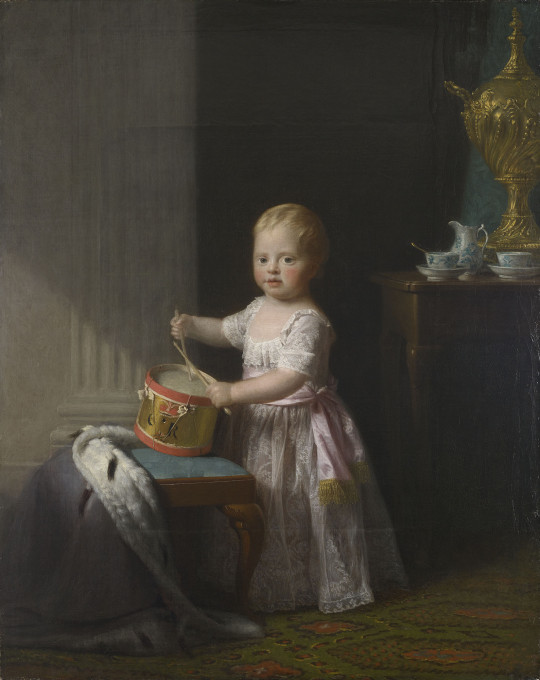
[Left: Anne Barbara Russell née Whitworth with her son Sir Henry Russell, oil on canvas, c. 1786, by George Romney, via Woolley & Wallis.
Right: Prince William, oil on canvas, c. 1767, by Allan Ramsay, via the Royal Collection Trust.]
Pink was just one of the many colours popular in 18th century English womenswear and seems to have stayed popular throughout the century. On the 3rd of January 1712 The Spectator published an article in which a man recalls seeing "a little Cluster of Women sitting together in the prettiest coloured Hoods that I ever saw. One of them was Blew, another Yellow, and another Philomot; the fourth was of a Pink Colour, and the fifth of a pale Green". On the 1st of May 1736 the Read's Weekly Journal, or British Gazetteer reports that the ladies attending the royal wedding wore gowns of "Gold stuffs, or rich Silks with Gold or Silver Flowers, or Pink or White Silks, with either Gold or Silver Netts or Trimmings;" shoes either "Pink, White or Green Silk, with Gold or Silver Lace and braid all over." On the 24th of May 1785 Charles Storer writes to Abigail Adams advising that fashionable colours in English court dress are "pink, lilac, and blue" such "as is worn at Versailles".
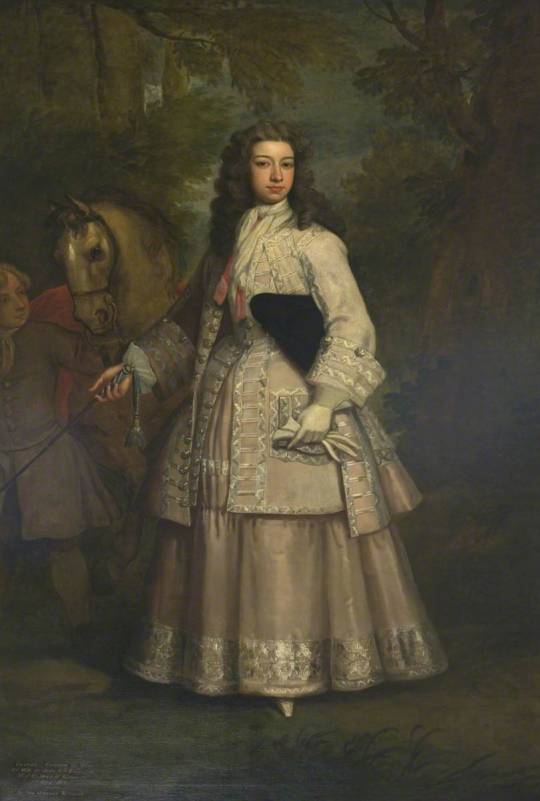
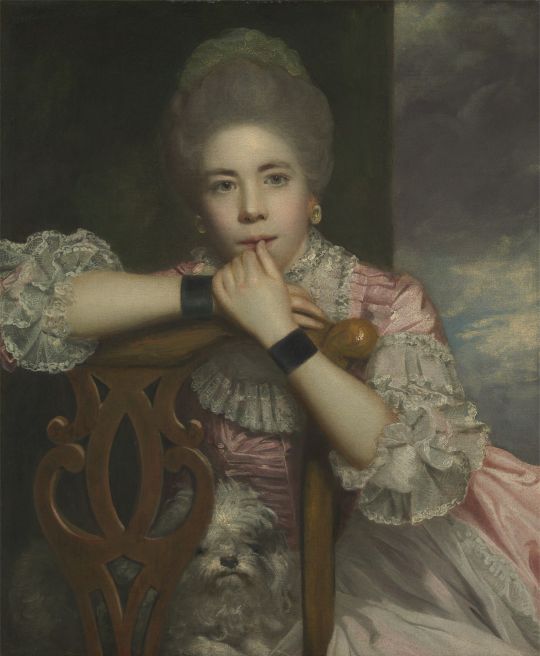
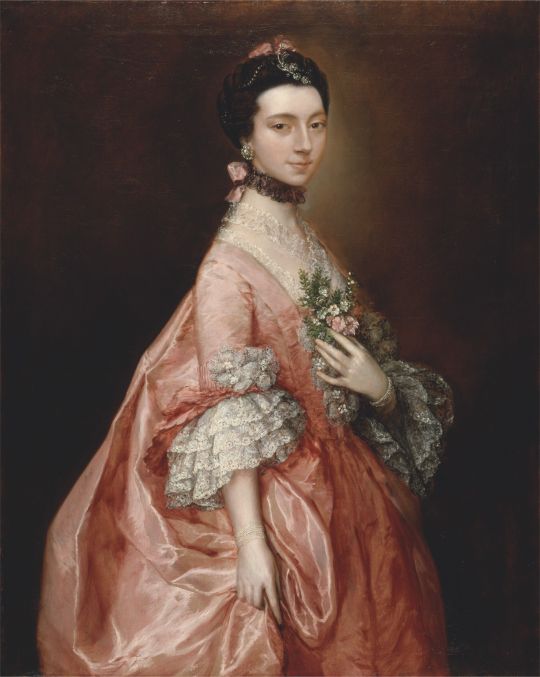
[Left: Frances, Daughter of Evelyn Pierpont, 1st Duke of Kingston, oil on canvas, c. 1700-23, by Godfrey Kneller, via Art UK.
Middle: Mrs. Abington as Miss Prue in "Love for Love" by William Congreve, oil on canvas, c. 1771, by Sir Joshua Reynolds, via Yale Center for British Art.
Right: Mary Little, later Lady Carr, oil on canvas, c. 1765, by Thomas Gainsborough, via Yale Center for British Art.]
In particular pink was popular amongst young women as the colour was associated with youth. Older women who wore pink were mocked as vain for dressing in a way that was seen as improper for their age. On the 31st of January 1754 Lady Jane Coke writes to Mrs. Eyre criticising old women who wear pink:
As for fashions in dress, which you sometimes inquire after, they are too various to describe. One thing is new, which is, there is not such a thing as a decent old woman left, everybody curls their hair, shews their neck, and wears pink, but your humble servant. People who have covered their heads for forty years now leave off their caps and think it becomes them, in short we try to out-do our patterns, the French, in every ridiculous vanity.
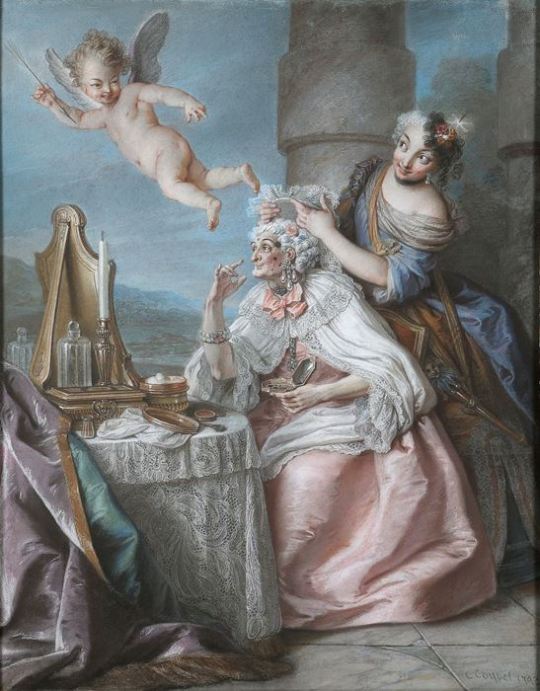
[Folly Embellishing Old Age With the Adornments of Youth, oil on canvas, c. 1743, by Charles-Antoine Coypel, via Master Art.]
For Englishmen acceptable clothing way much more limited. In A Foreign View of England in the Reigns of George I & George II Monsieur César de Saussure writes that Englishmen "do not trouble themselves about dress, but leave that to their womenfolk". He explains:
Englishmen are usually very plainly dressed, they scarcely ever wear gold on their clothes; they wear little coats called "frocks," without facings and without pleats, with a short cape above. Almost all wear small, round wigs, plain hats, and carry canes in their hands, but no swords. Their cloth and linen are of the best and finest. You will see rich merchants and gentlemen thus dressed, and sometimes even noblemen of high rank, especially in the morning, walking through the filthy and muddy streets.
César de Saussure warns that "a well-dressed person in the streets, especially if he is wearing a braided coat, a plume in his hat, or his hair tied in a bow, he will, without doubt, be called "French dog" twenty times perhaps before he reaches his destination" and is not only at risk of "being jeered at" but also "being bespattered with mud, but as likely as not dead dogs and cats will be thrown at him."
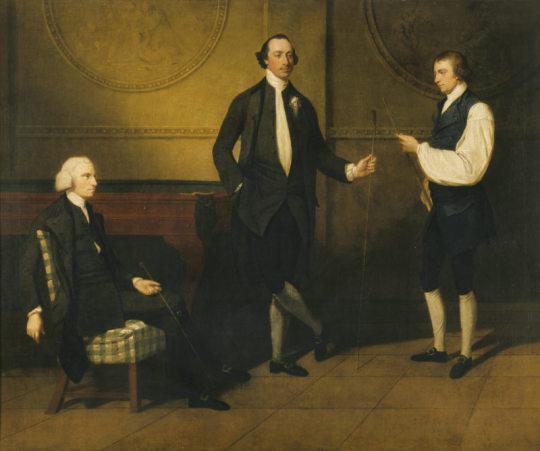
[Reverend Charles Everard Booth, Captain Griffith Booth, and an Unidentified Man playing Billiards, oil on canvas, c. 1775-9, by John Hamilton Mortimer, via the Royal Collection Trust.]
For Englishmen dressing "plainly" mostly meant wearing blacks and browns. In his book on macaroni, Pretty Gentleman, Peter McNeil found that in contrast most English menswear that he describes as generally consisting of "monochrome broadcloth" macaroni wore a variety of colours including green, orange, yellow, violet, red, white, blue, gold, silver and of course pink.
But it's not just the macaroni of the 1770s & 1780s that wore pink. We see pink in descriptions of feminine men's dress (both real and fictional) throughout the 18th century.
On the 2nd of June 1722 Sarah Osborn writes to Robert Byng:
I believe the gentlemen will wear petticoats very soon, for many of their coats were like our mantuas. Lord Essex had a silver tissue coat, and pink color lutestring waistcoat, and several had pink color and pale blue paduasoy coats, which looked prodigiously effeminate.
On the 18th of October 1729 the Universal Spectator and Weekly Journal published a story where an "effeminate" man's clothes were described as follows:
He had a flower'd pink-colour Silk Coat, with a Green-Sattin Waistcoat lac'd with Silver. Velvet Breeches, Clock'd Stockings the Colour of his Coat, Red-heel'd Pumps, a Blue Ribbon at the Collar of his Shirt, and his Sword-Hilt he embrac'd under the Elbow of his Left Arm,

[Sir Miles Stapylton, 4th Bt of Myton, oil on canvas, c. 1730-35, via Art UK.]
In The Adventures of Roderick Random (1748) the effeminate (and queer coded) Captain Whiffle is described as follows:
our new commander came on board in a ten-oared barge, overshadowed with a vast umbrella, and appeared in everything the reverse of Oakum, being a tall, thin young man, dressed in this manner: a white hat, garnished with a red feather, adorned his head, from whence his hair flowed upon his shoulders, in ringlets tied behind with a ribbon. His coat, consisting of pink-coloured silk, lined with white, by the elegance of the cut retired backward, as it were, to discover a white satin waistcoat embroidered with gold, unbuttoned at the upper part to display a brooch set with garnets, that glittered in the breast of his shirt, which was of the finest cambric, edged with right Mechlin: the knees of his crimson velvet breeches scarce descended so low as to meet his silk stockings, which rose without spot or wrinkle on his meagre legs, from shoes of blue Meroquin, studded with diamond buckles that flamed forth rivals to the sun! A steel-hilted sword, inlaid with gold, and decked with a knot of ribbon which fell down in a rich tassel, equipped his side; and an amber-headed cane hung dangling from his wrist. But the most remarkable parts of his furniture were, a mask on his face, and white gloves on his hands, which did not seem to be put on with an intention to be pulled off occasionally, but were fixed with a curious ring on the little finger of each hand.

[Henry Ingram, 7th Viscount Irwin and His Wife Anne, oil on canvas, c. 1745, by Philippe Mercier, via Art UK.]
On the 28th of July 1780 the London Courant reports:
A few days ago, a Macaroni made his appearance in the Assembly-room at Whitehaven, in the Following dress: a mixed silk coat, pink sattin waistcoat and breeches, covered with an elegant silver nett, white silk stockings with pink clocks, pink sattin shoes and large pearl buckles, a mushroom coloured stock, covered with a fine point lace; his hair dressed remarkably high, and stuck full of pearl pins.
On the 6th of August 1792 The Weekly Entertainer published Sketches and Portraits form the Life by Simon Tueopnrastus which included the following description:
Mercator was a youth of some genius and expectation, but by a strange perverseness of disposition, notwithstanding the extreme natural stiffness of his limbs, he had acquired an early attachment to the most finical and effeminate finery; so that, while yet a boy, he would exhaust every expedient of a fertile invention to procure a laced waistcoat, or the most foppish toy; would dangle a watch-string, with brass seals, from each fob, at a time when the frugal care of his parents would not permit him to wear a watch in either; and would strut in a fine pair of second-hand pink silk breeches, and a light blue coat, with all the formal dignity of—a soldier upon the parade.


[Left: Thomas King in "The Clandestine Marriage", oil on canvas, c. 1792, by Samuel De Wilde, via Yale Center for British Art.
Right: Edward Payne, oil on canvas, by Arthur Devis, via Art UK.]
While pink is mentioned in these descriptions of feminine men's dress it's not singled out as the girl colour the way pink would become in the 20th century. I would argue pink is seen as effeminate not because pink is a uniquely feminine colour but because it was used in fashionable dress. In 18th century England being interested in fashion was seen as an frivolous female trait. Men who showed too much interest in fashion were mocked and ridiculed for their gender nonconformity. "A Man must sink below the Dignity of his Nature, before he can suffer his Thoughts to be taken up on so trivial an Affair, as the Chosing, Suiting, and Adjusting the Adornments of his Person," complains a letter published on the 8th of May 1731 in Read's Weekly Journal, or British Gazetteer:
Decency of Garb ought inviolably to be preserved; nor can there be possibly an Excuse for Dressing like a Merry-Andrew: Rich and coloured Silks are in themselves effeminate, and unbecoming a Man; as are, in short, all Things that discover Dress to have been his Study 'Tis in vain for a Fop of Quality, to think his Title will protect him.


[Left: Madame de Pompadour (detail), oil on canvas, c. 1756, by François Boucher, via Alte Pinakothek.
Right: Elizabeth Wrottesley, later Duchess of Grafton, oil on canvas, c. 1764-5, by Thomas Gainsborough, via National Gallery of Victoria.]
English fashion was highly influenced by French fashion. A popular colour scheme in French fashion was green and pink. A famous example of this colour pairing can be seen in François Boucher's portrait of Madame de Pompadour (above left), she is depicted in a green gown with pink bows and flowers. You can see and example of how this style inspired English fashion in Thomas Gainsborough's portrait of Elizabeth Wrottesley (above right), who is depicted in a green gown with a floral pattern adorned with pink, white and green striped bows.
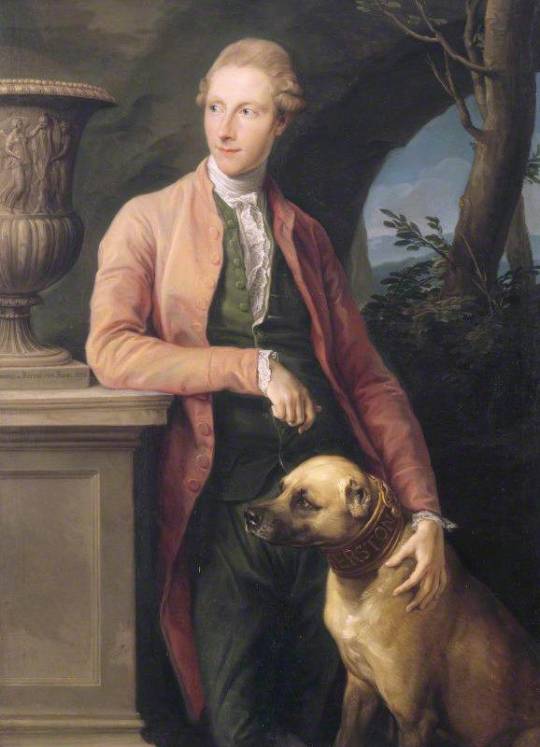
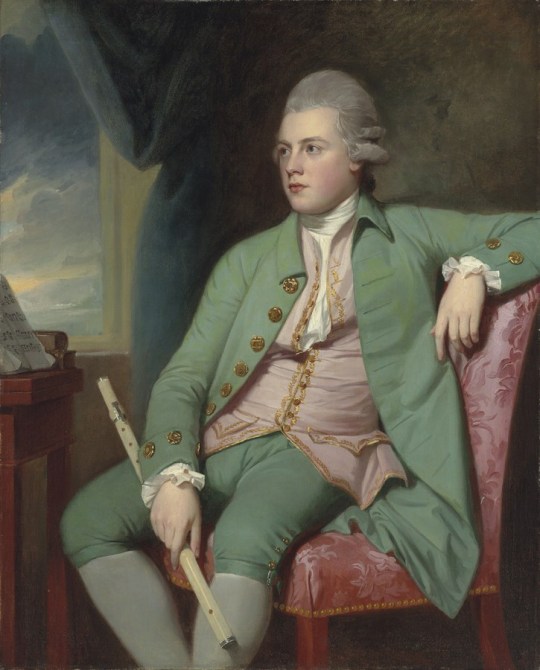
[Left: Sir Harry Fetherstonhaugh, oil on canvas, c. 1776, by Pompeo Batoni, via Wikimedia.
Right: Francis Lind, oil on canvas, c. 1775, by George Romney, via Mackinnon Fine Art.]
Fashionable Englishmen were also inspired by these French designs. Horace Walpole refers to the popularity of the colour combination writing to Lady Ossory on the 19th of February 1774 "If I went to Almack's and decked out my wrinkles in pink and green like Lord Harrington, I might still be in vogue". Almack's is referring to Almack's Assembly Rooms on Pall Mall which is believed to be the inspiration for the Macaroni Club. (see Pretty Gentleman by Petter McNeil p52-55) In a letter to Lord Harcourt on the 27th of July 1773 Walpole writes of "Macaronis lolling out of windows at Almack's like carpets to be dusted."
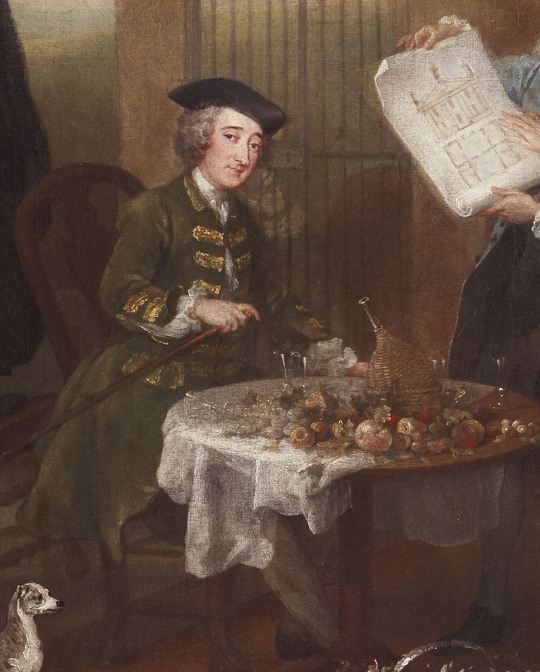

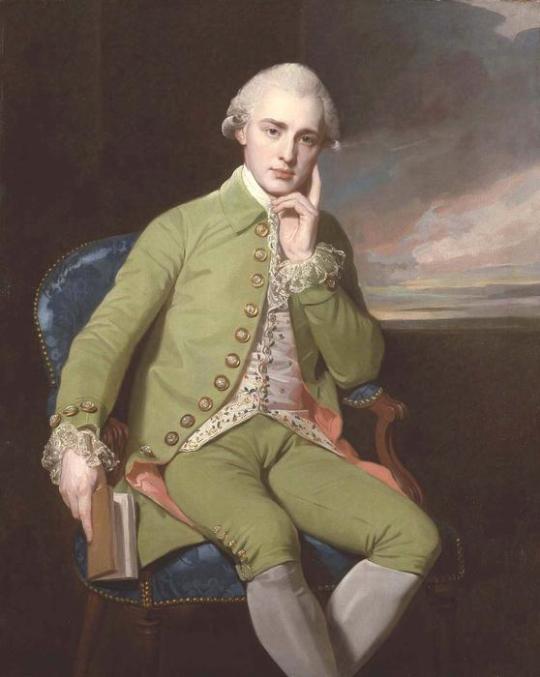
[Left: Detail of Stephen Fox from The Hervey Conversation Piece, oil on canvas, c. 1738-40, by William Hogarth, via Fairfax House.
Middle: Sir William Jones, oil on canvas, c. 1769, by Francis Cotes, via Art UK.
Right: Portrait of a Gentleman, oil on canvas, by George Romney.]
Men who wore green seem to have been just as much, if not more, at risk of being ridiculed, or even assaulted, for the colour of their clothes as those who wore pink. In Pierre Jean Grosley's A Tour to London (originally published 1772) he recalls traveling with a young English surgeon who was harassed by Londoners due to his green French frock coat:
At the first visit which he paid me in London, he informed me, that, a few days after his arrival, happening to take a walk thro' the fields on the Surry side of the Thames, dressed in a little green frock, which he had brought from Paris, he was attacked by three of those gentlemen of the mobility, who, taking him for a Frenchman, not only abused him with the foulest language, but gave him two or three slaps on the face: "Luckily, added he in French, I did not return their ill language; for, if I had, they would certainly have thrown me into the Thames, as they assured me they would, as soon as they perceived I was an Englishman, if I ever happened to come in their way again, in my Paris dress."
242 notes
·
View notes
Note
I want to write a lestat fic so bad I’m practically foaming at the mouth!! I want to do his character justice though. Would you spare some lestat characterization tips mayhaps?
Hi anon! I am so unbelievably flattered that you came to me. I'm sorry that it has taken me so long to reply. Would you like ✏️ anon if you come back?
I hope I answer this well. He is my oldest, dearest blorbo so I'm going to answer with series and book (head)canon, so there are some pretty hefty spoilers below the cut.

Characterization tips....
When in doubt, go bigger and more French! Do you doubt something you're writing for him is believable? You're probably wrong. This guy found Atlantis in canon. He has flown into the sun, switched bodies with a human, and met the literal, actual Devil.
Would he realistically flirt in your scenario? Yes. But what if...? Yes. He will always flirt. Always.
But on a more serious note, Lestat is very vain because he is incredibly powerful yet insecure. He can cause a lot of damage and is his own worst enemy. The embodiment of chaos.
Anne didn't christen him The Brat Prince for no reason at all. He not only pouts when he doesn't get what he wants, he often pouts when he gets exactly what he wants. He is rarely satisfied and once a mystery is solved or an objective obtained he's ready to move on.
Something that makes him particularly appealing to me has always been his contrasts, how he can be so self-centered and horrible, but love so openly and deeply. If he loves someone he would die for them, as long as he looked good doing it. He can hate and love the same person in the same moment and still give them everything he has. But, he will always try to be a step ahead to have his own safety net because trust isn't his thing.
Lestat has such an odd mix of confidence and insecurity. He never once questioned why the Queen of the vampires would be enamored with him. Of course she would be. But even during all of his drama with Akasha he pined for Louis. Many of his exploits are to get the attention of someone who isn't giving him enough at the moment.
I'm going to do a deep TVL dive real quick because this is the foundation of who he is for me. The Wolfkiller. He was embarrassed at being "poor" aristocracy and the one warm coat he had was the one the villagers made for him from the wolf pelt. He wasn't proud of that event, but that coat meant more to him than they could possibly imagine.
Also, he loves dogs. Seriously, if you need to write him having a pet dog, go for it. Especially mastiffs and boucherons (book and series canon).
I don't particularly like the word "flamboyant" for him, but he is. He is performative. Rarely does he do anything that isn't thoroughly thought through if someone is watching. He is equally impetuous if it looks good.
Lastly, some emotional characterization. He hates to appear vulnerable, but is constantly vulnerable. It's almost as if he doesn't know how to mask that part of him. His desperation to be part of the Italian acting troupe was obvious almost to the point of being a pathetic fanboy. He can't help but be incredibly earnest. Even if it causes him pain or embarrassment.
The Father of Lies, the Brat Prince, Wolfkiller, Lelio... Lestat is all of these things. That's what has always made him such a rich character. He can be serious, but Anne's description of him through Armand might be my favorite: he must make a gutter theatrical out of stubbing his toe.
God forbid no one was around to witness the pain and suffering he endured from such a tragic event. affectionately
I didn't go into anything romance or shipped based on purpose so feel free to let me know it that's what you meant and I missed the mark.
#love my anons#lestat headcanon#the vampire lestat#lestat de lioncourt#iwtv fanfiction#iwtv#amc iwtv#amc interview with the vampire#interview with the vampire#sam reid#iwtv book spoilers#the vampire chronicles
36 notes
·
View notes
Text

Prince Louis' christening | July 9 2018
64 notes
·
View notes
Text




Happy 11th birthday to Prince George of Wales!
Born on 22 July 2013, George Alexander Louis is the eldest child of William, Prince of Wales and Catherine, Princess of Wales, the eldest grandchild of King Charles Ill and second in the line of succession to the British throne behind his father.
George was christened on 23 October by Justin Welby, Archbishop of Canterbury, in the Chapel Royal at St James's Palace. Prince George spent his first months at his parents' cottage on the grounds of Bodorgan Hall in Anglesey, Wales, before his family relocated to Kensington Palace in 2014.
He embarked on his first royal tour with his parents in April 2014, during which the Cambridges spent three weeks in New Zealand and Australia. In June 2015, George made his first public appearance on the balcony of Buckingham Palace following the Trooping the Colour parade. From 2015 to 2017, the family lived at Anmer Hall in Norfolk, where George started his education at the West Acre Montessori School Nursery in January 2016.
George started primary school under the name George Cambridge in September 2017 at the Thomas's School in Battersea. In 2022, the family moved to Adelaide Cottage in Windsor Home Park. Since September 2022, George and his siblings, Charlotte and Louis, have attended Lambrook, in Berkshire.
35 notes
·
View notes
Text
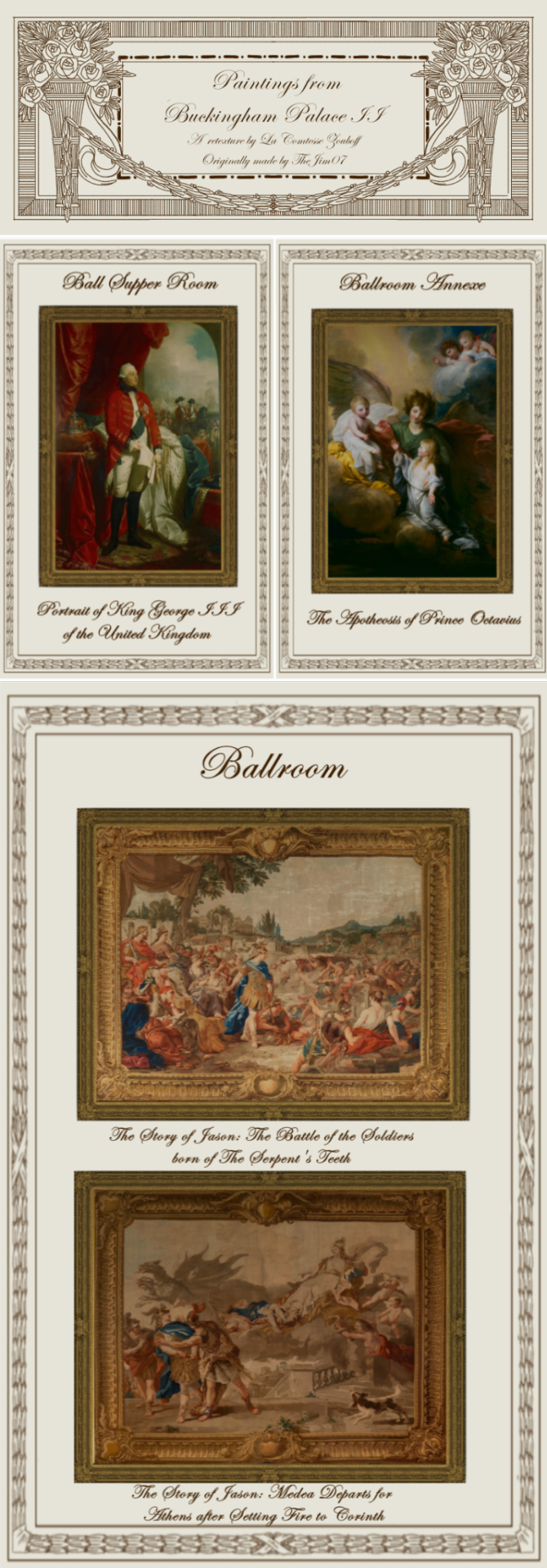
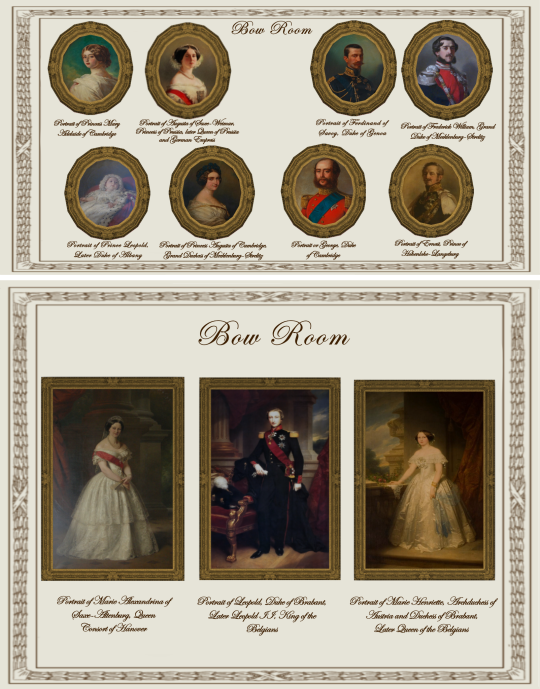
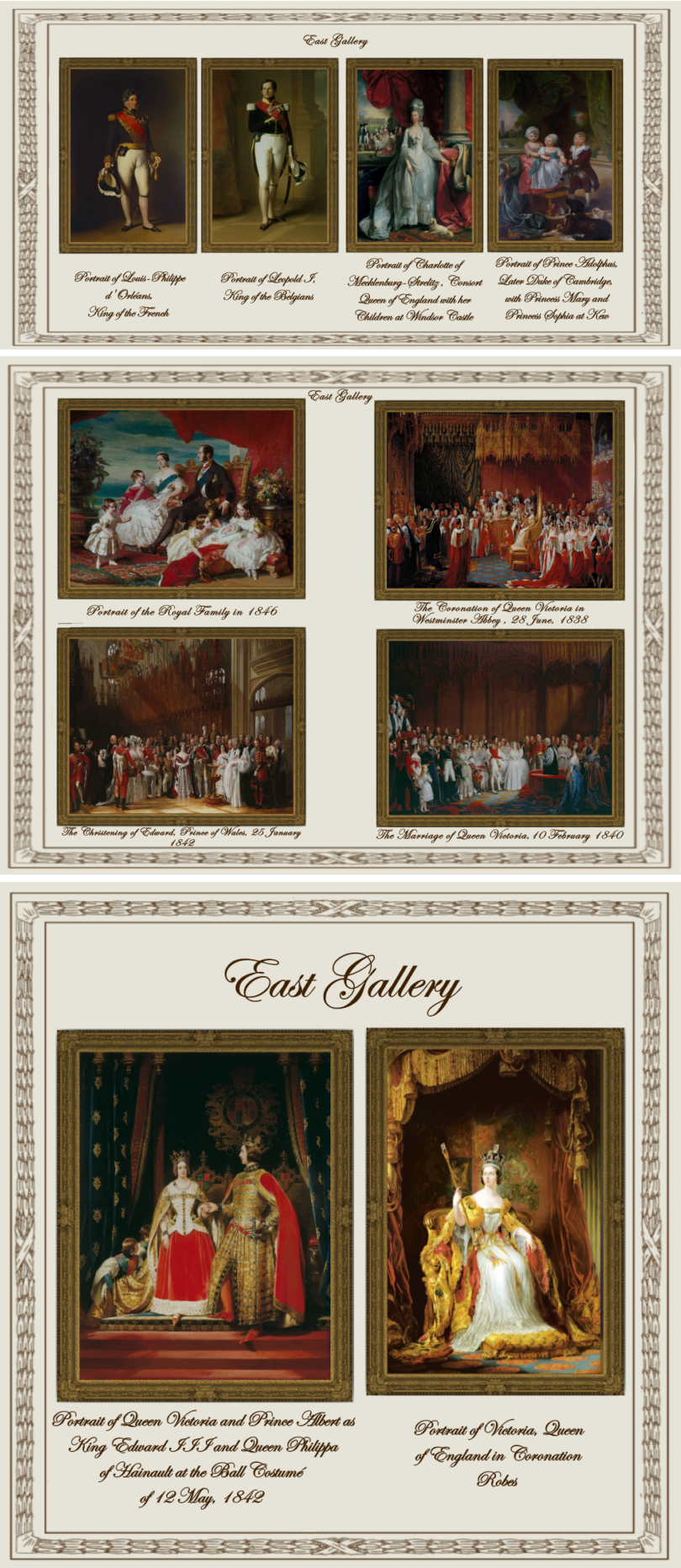


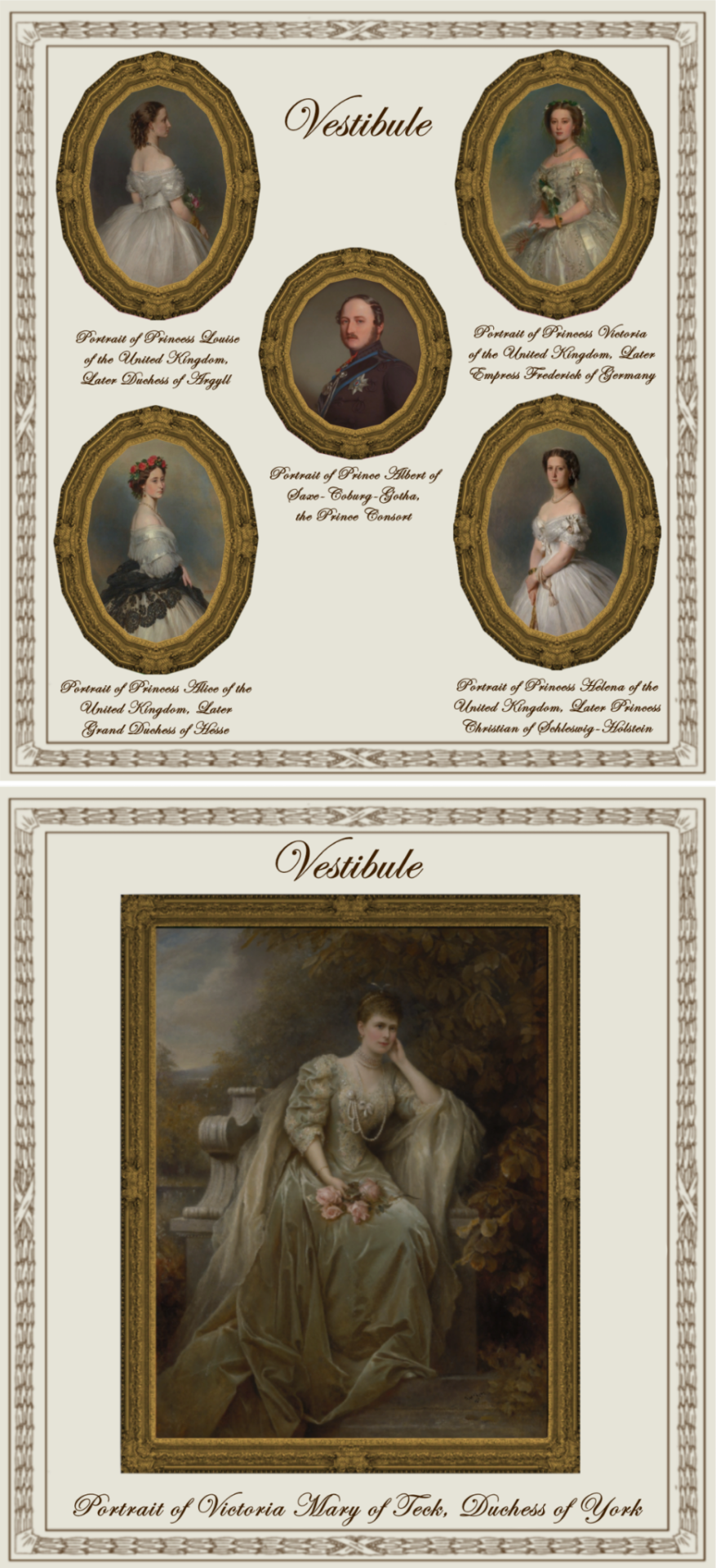


Paintings from Buckingham Palace: part II
A retexture by La Comtesse Zouboff — Original Mesh by @thejim07
Spread among 13 occupied and historic royal residences in the United Kingdom, the collection is owned by King Charles III and overseen by the Royal Collection Trust. The British monarch owns some of the collection in right of the Crown and some as a private individual. It is made up of over one million objects, including 7,000 paintings, over 150,000 works on paper, this including 30,000 watercolours and drawings, and about 450,000 photographs, as well as around 700,000 works of art, including tapestries, furniture, ceramics, textiles, carriages, weapons, armour, jewellery, clocks, musical instruments, tableware, plants, manuscripts, books, and sculptures.
Some of the buildings which house the collection, such as Hampton Court Palace, are open to the public and not lived in by the Royal Family, whilst others, such as Windsor Castle, Kensington Palace and the most remarkable of them, Buckingham Palace are both residences and open to the public.
About 3,000 objects are on loan to museums throughout the world, and many others are lent on a temporary basis to exhibitions.
-------------------------------------------------------
The second part includes paintings displayed in the Ball Supper Room, the Ballroom, the Ballroom Annexe, the Bow Room, the East Gallery, the Grand Entrance and Marble Hall, the Minister's Landing & Staircase, the Vestibule, the Chinese Dining Room and the Balcony Room.
This set contains 57 paintings and tapestries with the original frame swatches, fully recolourable. They are:
Ball Supper Room (BSR):
Portrait of King George III of the United Kingdom (Benjamin West)
Ballroom (BR):
The Story of Jason: The Battle of the Soldiers born of The Serpent's Teeth (the Gobelins)
The Story of Jason: Medea Departs for Athens after Setting Fire to Corinth (the Gobelins)
Ballroom Annexe (BAX):
The Apotheosis of Prince Octavius (Benjamin West)
Bow Room (BWR):
Portrait of Princess Mary Adelaide of Cambridge (William Corden the Younger)
Portrait of Princess Augusta of Cambridge, Grand Duchess of Mecklenburg-Strelitz (Alexander Melville)
Portrait or George, Duke of Cambridge (William Corden the Younger)
Portrait of Frederick William, Grand Duke of Mecklenburg-Strelitz (Franz Xaver Winterhalter)
Portrait of Augusta of Saxe-Weimar, Princess of Prussia, later Queen of Prussia and German Empress (Franz Xaver Winterhalter)
Portrait of Prince Leopold, Later Duke of Albany (Franz Xaver Winterhalter)
Portrait of Ernest, Prince of Hohenlohe-Langeburg (Franz Xaver Winterhalter)
Portrait of Ferdinand of Savoy, Duke of Genoa (Eliseo Sala)
Portrait of Marie Alexandrina of Saxe-Altenburg, Queen Consort of Hanover (Carl Ferdinand Sohn)
Portrait of Leopold, Duke of Brabant, Later Leopold II, King of the Belgians (Nicaise de Keyser)
Portrait of Marie Henriette, Archduchess of Austria and Duchess of Brabant, Later Queen of the Belgians (Nicaise de Keyser)
East Gallery (EG):
Portrait of Leopold I, King of the Belgians (Franz Xaver Winterhalter)
Portrait of Victoria, Queen of England in Coronation Robes (Sir George Hayter)
Portrait of Louis-Philippe d'Orléans, King of the French (Franz Xaver Winterhalter)
Portrait of Charlotte of Mecklenburg-Strelitz, Consort Queen of England with her Children at Windsor Castle (Benjamin West)
Portrait of Prince Adolphus, later Duke of Cambridge, With Princess Mary and Princess Sophia at Kew (Benjamin West)
The Coronation of Queen Victoria in Westminster Abbey, 28 June, 1838. (Sir George Hayter)
The Christening of Edward, Prince of Wales 25 January, 1842 (Sir George Hayter)
The Marriage of Queen Victoria, 10 February, 1840 (Sir George Hayter)
Portrait of the Royal Family in 1846 (Franz Xaver Winterhalter)
Portrait of Queen Victoria and Prince Albert as King Edward III and Queen Philippa of Hainault at the Ball Costumé of 12 May, 1842 (Sir Edwin Landseer)
Grand Entrance and Marble Hall (GEMH):
Portrait of Edward, Duke of Kent (John Hoppner)
Portrait of Ernest I, Duke of Saxe-Coburg-Gotha (George Dawe)
Portrait of Victoria of Saxe-Coburg-Saafeld, Dowager Duchess of Kent (Franz Xaver Winterhalter)
Portrait of Albert, Prince Consort of the United Kingdom (Franz Xaver Winterhalter)
Portrait of Victoria, Queen Consort of the United Kingdom in State Robes (Franz Xaver Winterhalter)
Portrait of Louise d'Orléans, Consort Queen of the Belgians, with her Son Leopold, Duke of Brabant (Franz Xaver Winterhalter)
Portrait of Feodora of Leiningen, Princess of Hohenlohe-Langeburg, with her Daughter, Princess Adelheid (Sir George Hayter)
Portrait of George, Prince of Wales, Later King George IV (Mather Byles Brown)
Portrait of Victoire of Saxe-Coburg-Gotha, Duchess of Nemours (Franz Xaver Winterhalter)
Portrait of Augustus, Duke of Sussex (Domenico Pellegrini)
Portrait of Leopold I, King of the Belgians (William Corden the Younger)
Minister's Landing and Staircase (MLS):
Portrait of George, Prince of Wales in Garther Robes (John Hoppner)
The Loves of the Gods: The Rape of Europa (the Gobelins)
The Loves of the Gods: The Rape of Proserpine (The Gobelins)
Vestibule (VL):
Portrait of Prince Albert of Saxe-Coburg-Gotha, the Prince Consort (Unknown Artist from the German School)
Portrait of Princess Alice of the United Kingdom, Later Grand Duchess of Hesse (Franz Xaver Winterhalter)
Portrait of Princess Helena of the United Kingdom, Later Princess Christian of Schleswig-Holstein (Franz Xaver Winterhalter)
Portrait of Princess Louise of the United Kingdom, Later Duchess of Argyll (Franz Xaver Winterhalter)
Portrait of Princess Victoria of the United Kingdom, Later Empress Frederick of Germany (Franz Xaver Winterhalter)
Portrait of Victoria Mary of Teck, Duchess of York (Edward Hughes)
Chinese Dining Room or Pavilion Breakfast Room(CDR):
Set of Four Painted Chinoiserie Wall panels I (Robert Jones)
Set of Four Painted Chinoiserie Wall panels II (Robert Jones)
Set of Four Painted Chinoiserie Wall panels III (Robert Jones)
Set of Four Painted Chinoiserie Wall panels IV (Robert Jones)
Balcony Room or Centre Room (BR):
Chinoiserie Painted Panel I (Robert Jones)
Chinoiserie Painted Panel II (Robert Jones)
Chinoiserie Painted Panel III (Robert Jones)
Chinoiserie Painted Panel IV (Robert Jones)
EXTRAS! (E):
I decided to add the rest of the tapestries from the story of Jason (wich hangs in the Grand Reception Room at Windsor Castle) and (with Jim's permission) added the original mesh for paintings number 2,3,4 & 5 from the Vestibule (seen here and here) wich was never published. These items are:
The Story of Jason: Jason Pledges his Faith to Medea (the Gobelins)
The Story of Jason: Jason Marries Glauce, Daughter of Creon, King of Thebes (the Gobelins)
The Story of Jason: The Capture of the Golden Fleece (the Gobelins)
The Story of Jason: The Poisoning of Glauce and Creon by Medea's Magic Robe (the Gobelins)
Sea Melodies (Herbert James Draper) (made by TheJim07)
-------------------------------------------------------
Found under decor > paintings for:
500§ (BWR: 1,2,3,4,5,6, & 8 |VL: 1)
570§ (VL: 2,3,4 & 5 |E: 5)
1850§ (GEMH: 1 & 3)
2090§ (GEMH: 2,6,7, 9 & 11)
3560§ (GEMH: 4,5 & 10 |BSR: 1 |EG: 1,2,3,4 & 5 |MLS: 1 |BAX: 1)
3900§ (CDR: 1,2,3 & 4 |BR: 1,2,3 & 4 |EG: 10 |VL: 6 |GEMH: 8)
4470§ (MLS: 2 |E: 1)
6520§ (BR 1 & 2| MLS: 3 |EG: 6,7,8 & 9 |BR: 1 & 2 |E: 2,3 & 4)
Retextured from:
"Saint Mary Magdalene" (BWR: 1,2,3,4,5,6, & 8 |VL: 1) found here.
"Sea Melodies" (VL: 2,3,4 & 5 |E: 5)
"The virgin of the Rosary" (GEMH: 1 & 3) found here.
"Length Portrait of Mrs.D" (GEMH: 4,5 & 10 |BSR: 1 |EG: 1,2,3,4 & 5 |MLS: 1 |BAX: 1) found here
"Portrait of Maria Theresa of Austria and her Son, le Grand Dauphin" (CDR: 1,2,3 & 4 |BR: 1,2,3 & 4 |EG: 10 |VL: 6 |GEMH: 8) found here
"Sacrifice to Jupiter" (MLS: 2 |E: 1) found here
"Vulcan's Forge" (BR 1 & 2| MLS: 3 |EG: 6,7,8 & 9 |BR: 1 & 2 |E: 2,3 & 4) found here
(you can just search for "Buckingham Palace" using the catalog search mod to find the entire set much easier!)
Disclaimer!
Some paintings in the previews look blurry but in the game they're very high definition, it's just because I had to add multiple preview pictures in one picture to be able to upload them all! Also sizes shown in previews are not accurate to the objects' actual sizes in most cases.
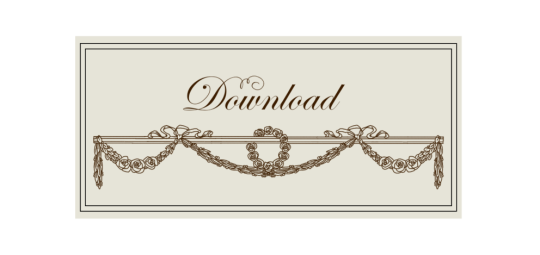
Drive
(Sims3pack | Package)
(Useful tags below)
@joojconverts @ts3history @ts3historicalccfinds @deniisu-sims @katsujiiccfinds @gifappels-stuff
-------------------------------------------------------
#the sims 3#ts3#sims 3#s3cc#sims 3 cc#sims 3 download#sims 3 decor#edwardian#victorian#regency#georgian#buckingham#buckingham palace#wall decor#sims 3 free cc#large pack#this was exhausting
67 notes
·
View notes
Text

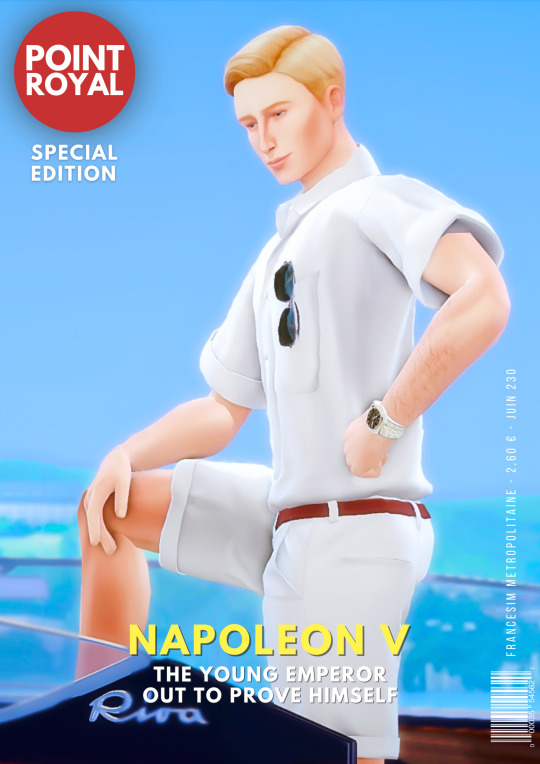
POINT ROYAL Magazine | Special Edition | Coronation: portrait of H.I.M Emperor Napoleon V, the young emperor out to prove himself
Emperor Napoleon V is one of the world's youngest rulers. Among the pantheon of Napoleons, he is sometimes compared by the French people to l'Aiglon (Napoleon II). In any case, this is the affectionate nickname that the imperial family has given him since he was a child. Soon, in a grandiose ceremony, l'Aiglon will be crowned Emperor at Notre-Dame de Paris. In the run-up to the event, we invite you to rediscover His Majesty's extraordinary first 19 years through our pages packed with illustrations and memorabilia.
Who is emperor Napoleon V?
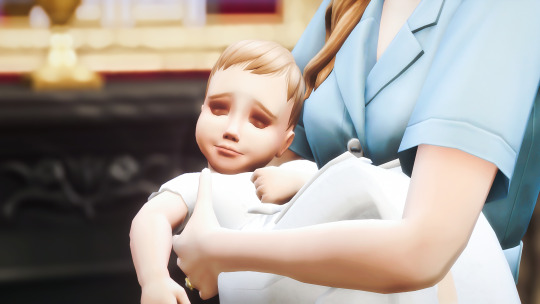
One of the first official photographs of Prince Imperial Louis, shortly after his christening.
Emperor Napoleon V was born Louis Napoleon Simparte on 22 October 2002 at the Tuileries Palace in the heart of Paris. He and his twin sister, Hortense Rose Simparte, became known as the Children of Francesim. Since the 12th century, this title has referred to the legitimate children of the French monarch. The following days, Louis and Hortense were baptised at Notre-Dame de Paris by the Archbishop of Paris.
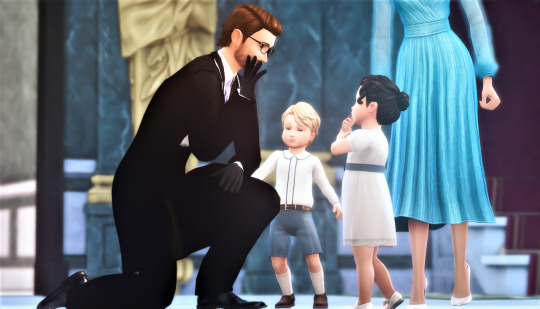
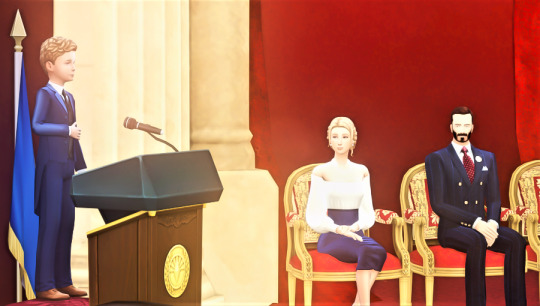
Left: As a toddler, he attended Emperor David of Pierreland's state visit to Francesim. Right: A little later, aged just 8, Louis made his first public speech on the occasion of the Napoleonic events.
From the moment he was born, the young imperial prince was already the first in the order of succession to the throne, so he was quickly associated with the Crown's public appearances and activities.
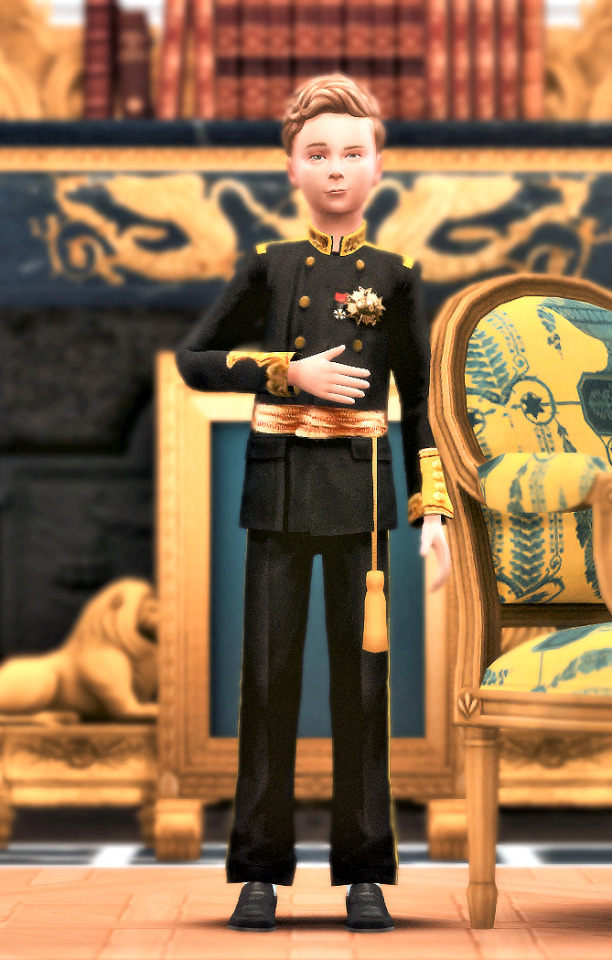
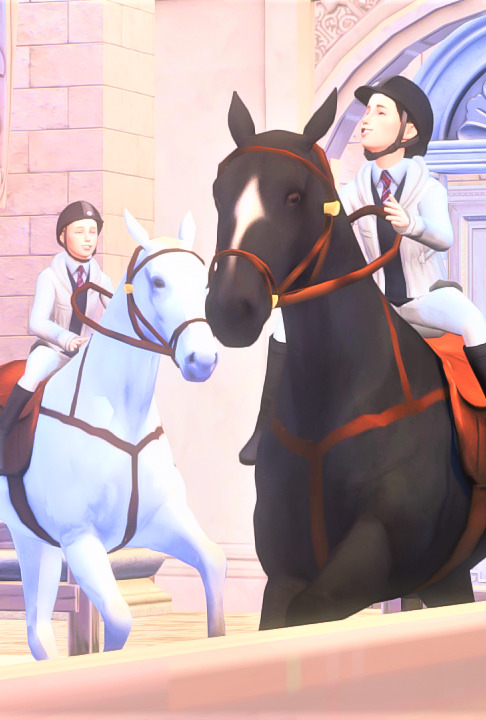
Left: 1st official portrait of the Prince Imperial wearing the Imperial Guard uniform. Right: Francesim's children receive their first riding lessons at the Versailles stables.
From an early age, Louis showed a keen interest in a military career. He wore the uniforms of the various regiments to which he belonged. Even today, the young emperor has a vast wardrobe of uniforms, which he prefers to wear instead of civilian ceremonial dress. Not surprising for a Napoleon.
Louis and Hortense have a modern educational background, having been educated at illustrious Parisian public schools such as Sainte-Barbe. Outgoing and charming, Louis has always had the profile of a charismatic leader. Unlike his sister Hortense, who was quieter and more shy, Louis always surrounded himself with friends quickly. Little is known about this period of their lives, in accordance with the wishes of the late Emperor Napoleon IV.
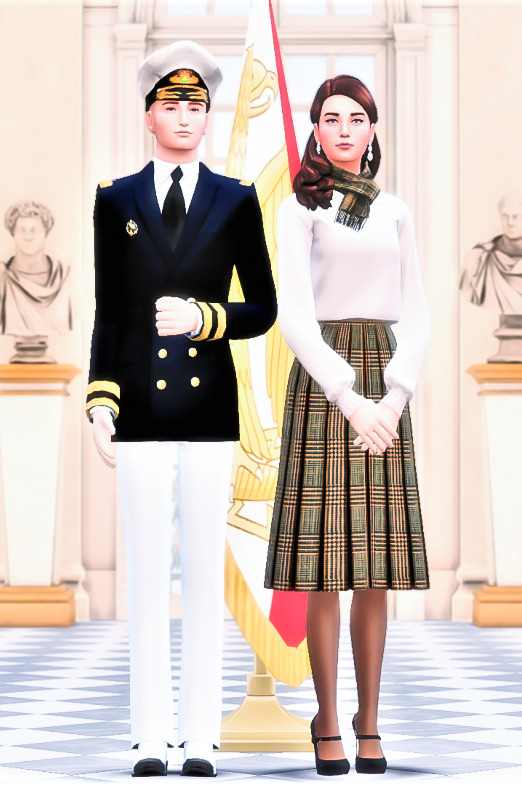
Official portrait of the Children of Francesim on their 18th birthday. The photo was taken at the Château de Meudon, the official residence of the Imperial Princes of Francesim.
Last year, Louis and Hortense celebrated their 18th birthday. It was a very busy year for the Children of Francesim: Hortense took part in her first royal activities, while Louis spearheaded the maritime alliance project between the Pierreland Empire (@officalroyalsofpierreland) and the Empire of Francesim. Together with Duke Felipe, he inaugurated the Henry submarine, which combines the expertise of both armies.
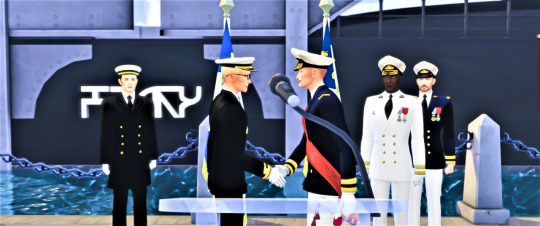
The Prince Imperial and Duke Felipe on the day of the inauguration of the Francesim-Pierreland maritime alliance.
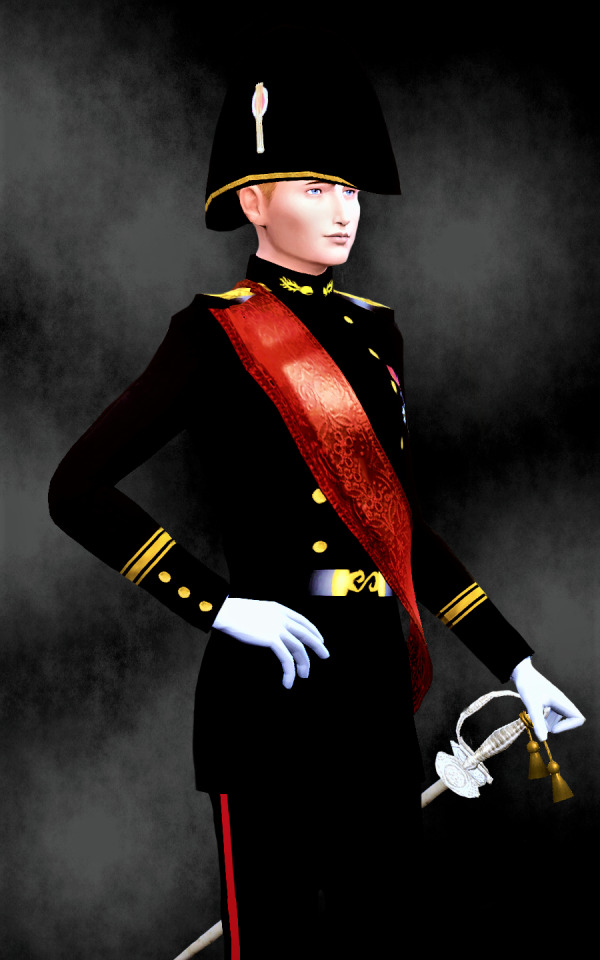

Portraits of Francesim's children taken at the Ecole Polytechnique. They are wearing the school uniform, which regularly takes part in military parades.
At the end of their respective engagements, the twins entered the Ecole Polytechnique together and became Polytechniciens. They completed their year and took part in the end-of-year gala held at the beginning of the summer at the Opéra Garnier.
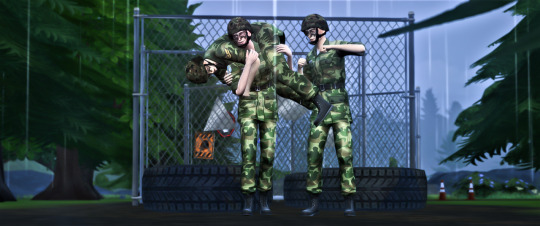
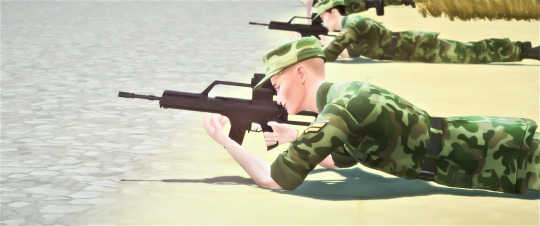
The Ecole Polytechnique offered a combination of military, scientific and economic training.
While Hortense wished to continue her scientific studies at the Ecole Polytechnique, after the coronation Louis turned to the Francesim Naval School, which trained naval officers.

During his year at Polytechnique, Louis became Napoleon V at the age of 19, following the violent death of his father in an ambush in the middle of Paris.
The death of Emperor Napoleon IV is still shrouded in mystery, and an investigation is underway. It will give rise to an impressive trial, where many wonder whether Emperor Napoleon V will wish to sit as a judge - his imperial powers theoretically allow him to do so.
It was during the period of mourning that Napoleon V made his relationship with the future Empress Charlotte official. In fact, Their Imperial Majesties had known each other since the age of 3 and had grown up together. A little-known fact is that Charlotte accompanied Louis to the Ecole Polytechnique and even took part in military training! "Charlotte has always impressed me, she has a lot of presence, allure, and always the right words" confided Napoleon during the Cannes Film Festival, where the couple announced their engagement. He also admitted that he had long had feelings for his beloved (several years), but never dared to admit them until his father's death. The tragedy made him realise that he had to enjoy every moment of life.
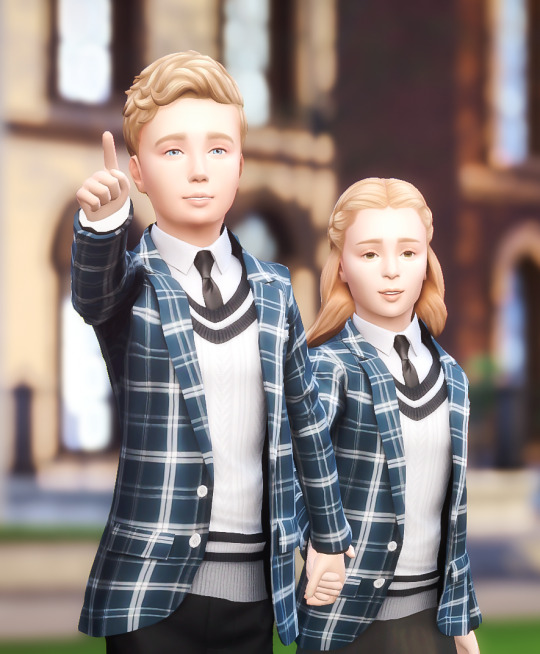
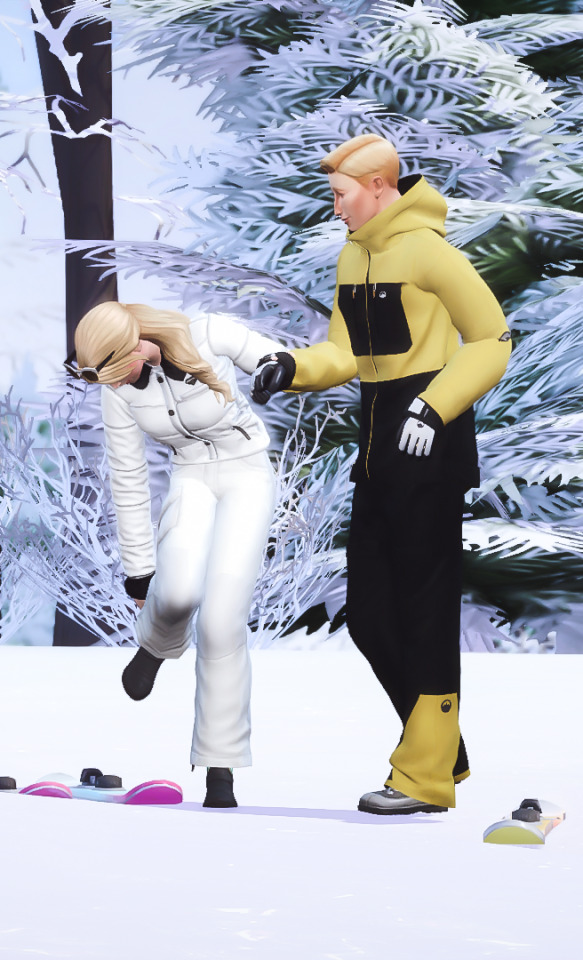
The imperial couple shared with us some rare photos of their years before the rise of Napoleon V.
Charlotte brought much joy to the young emperor, who appreciated her advice and the "Mortemart spirit". After all, Empress Charlotte is a member of the famous and noble French family of Rochechouart-Mortemart. L'esprit Mortemart is a well-known expression that praises the family's caustic, natural and fine sense of humour. The imperial couple's entourage readily acknowledged that Charlotte had inherited this characteristic wit, which has the art of giving it to others.
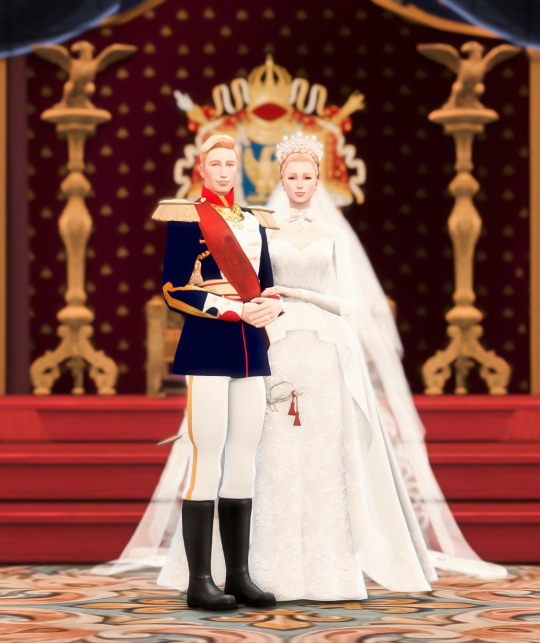
The first official portrait of the married Emperor Napoleon V and Empress Charlotte. The Emperor wears the uniform of the Imperial Guard, and the Empress has reused Madame Mère's wedding dress as a tribute to her new family.
At the beginning of June, the emperor married Charlotte. It was a marriage that may have seemed rather hasty given the young age of the couple. However, Napoleon V always made it clear that he wanted to be crowned alongside Charlotte. To do so, he had to pass through the altar, as the coronation is a partly religious ceremony. Madame Mère supported her son's determination and was delighted for him. After all, "the two of them have been looking for each other since they were children, so it was bound to happen sooner or later", she assures us. Charlotte seems to have been well received by her in-laws, although there are rumours of a disagreement between the Empress and Madame Hortense.
After a well-deserved honeymoon in French Polynesia, the lovers are now devoting their full attention to preparations for the coronation. It was a year marked by many upheavals for the emperor, who courageously faced up to the trials of life. Without a doubt, the post-coronation period will be the real beginning of Napoleon V's reign, and we can't wait to see what the emperor's next initiatives will be.
⚜ Traduction française
POINT ROYAL Magazine | Edition spéciale | Couronnement : portrait de S.M l'Empereur Napoléon V, le jeune empereur qui veut faire ses preuves
L'empereur Napoléon V est l'un des dirigeants les plus jeunes au monde. Parmi le panthéon des Napoléons, il est parfois comparé par le peuple français à l'Aiglon (Napoléon II). C'est en tout cas le surnom affectueux que lui donne la famille impériale depuis sa plus tendre enfance. Bientôt, dans une cérémonie grandiose, l'Aiglon sera sacré Empereur à Notre-Dame de Paris. En vue de l'événement, nous vous proposons de redécouvrir, à travers nos pages riches d'illustrations et de souvenirs, les 19 premières années extraordinaires de Sa Majesté.
Qui est l'empereur Napoléon V ?
L'une des premières photographies officielles du prince impérial Louis, un peu après son baptême.
L'empereur Napoléon V est né Louis Napoléon Simparte, le 22 octobre 2002 au palais des Tuileries, en plein cœur de Paris. Lui et sa sœur jumelle, Hortense Rose Simparte, portent alors le titre d'Enfants de Francesim. Il désigne depuis le XIIIe siècle les enfants légitimes du monarque français. Les jours suivants, Louis et Hortense sont baptisés à Notre-Dame de Paris, par l'archevêque de Paris.
Dès sa naissance, le jeune prince impérial est d'ores et déjà premier dans l'ordre de succession au trône et il est donc associé rapidement aux apparitions publiques et activités de la Couronne. Bambin, il a assisté à la visite d'Etat de l'empereur David de Pierreland en Francesim. Un peu plus tard, à l'âge de 8 ans à peine, Louis fait son premier discours public à l'occasion des événements napoléoniens.
A gauche : 1er portrait officiel du prince impérial portant l'uniforme de la garde impériale. A droite : Les Enfants de Francesim reçoivent leurs premiers cours d'équitation à l'écurie de Versailles.
Très tôt, Louis a manifesté un grand intérêt pour une carrière militaire. Il porte d'ailleurs depuis son plus jeune âge des uniformes de divers régiments dont il fait partie. Encore aujourd'hui, le jeune empereur possède une grande garde-robe d'uniformes, qu'il préfère porter à la place des tenues civiles d'apparat. Rien d'étonnant pour un Napoléon.
Louis et Hortense ont un parcours scolaire moderne, puisqu'ils ont été formés dans des écoles privées parisiennes illustres comme Sainte-Barbe. D'un caractère sociable et charmeur, Louis a toujours eu le profil d'un leader charismatique. Contrairement à sa soeur Hortense, plus calme et timide, Louis s'est toujours entouré d'amis rapidement. Peu d'informations sont connues de cette période de leur vie, selon le souhait de feu l'empereur Napoléon IV.
Portrait officiel des Enfants de Francesim pour leurs 18 ans. Le cliché a été pris au château de Meudon, la demeure officielle des princes impériaux de Francesim.
L'an dernier, Louis et Hortense célébraient leurs 18 ans. Une année très riche pour les Enfants de Francesim : Hortense a participé à ses premières activités royales, tandis que Louis a mené de front le projet d'alliance maritime entre l'empire de Pierreland et l'empire de Francesim. Il a inauguré avec le duc Felipe le sous-marin Henry, qui allie le savoir-faire des deux armées.
Le prince impérial et le duc Felipe le jour de l'inauguration de l'alliance maritime Francesim-Pierreland.
Portraits des Enfants de Francesim réalisés à l'Ecole Polytechnique. Ils sont dans le grand uniforme de l'école, qui participe régulièrement aux défilés militaires.
A la fin de leurs engagements respectifs, les jumeaux sont entrés ensemble à l'Ecole Polytechnique et sont devenus des polytechniciens. Ils ont terminé leur année et ont participé au gala de fin d'année qui a eu lieu au début de l'été à l'Opéra Garnier.
L'Ecole Polytechnique offre à la fois une formation militaire, scientifique et économique.
Si Hortense souhaite continuer son cycle scientifique à l'Ecole Polytechnique, Louis va se tourner après le couronnement vers l'Ecole navale de Francesim, qui forme les officiers de la marine.
Pendant son année à Polytechnique, Louis devient Napoléon V à l'âge de 19 ans, suite au violent décès de son père dans une embuscade en plein Paris.
La mort de l'empereur Napoléon IV est encore entourée de mystères, une enquête est en cours. Elle donnera lieu à un procès impressionnant, où beaucoup se demandent si l'empereur Napoléon V souhaitera y siéger en tant que juge - ses pouvoirs impériaux le permettent, théoriquement.
C'est durant la période de deuil que Napoléon V officialise sa relation avec la future impératrice Charlotte. En réalité, Leurs Majestés Impériales se connaissent depuis l'âge de 3 ans et ont grandi ensemble. Fait peu connu, Charlotte a accompagné Louis à l'Ecole Polytechnique et a même participé aux formations militaires ! "Charlotte m'a toujours impressionné, elle a beaucoup de prestance, d'allure, et des mots toujours justes, une personnalité assurée." confie Napoléon durant le festival de Cannes, où le couple a annoncé leurs fiançailles. Il reconnaîtra aussi qu'il a longtemps eu des sentiments pour sa belle (depuis plusieurs années), mais qu'il n'a jamais osé les avouer avant la mort de son père. La tragédie lui aurait fait réaliser qu'il doit profiter de chaque instant de la vie.
Le couple impérial a partagé avec nous de rares clichés photographiques de leurs années avant l'ascension de Napoléon V.
Charlotte apporte beaucoup de joie au jeune empereur, qui apprécie ses conseils et "l'esprit Mortemart". Car l'impératrice Charlotte est un membre de la célèbre et noble famille française des Rochechouart-Mortemart. L'esprit Mortemart est une expression bien connue, qui vante l'humour caustique, naturel et fin de la famille. L'entourage du couple impérial reconnaît volontiers que Charlotte a hérité de cet esprit si caractéristique, qui a l'art d'en donner aux autres.
Premier portrait officiel de l'empereur Napoléon V et de l'impératrice Charlotte mariés. L'empereur porte l'uniforme de la garde impériale, et l'impératrice a réutilisé la robe de mariage de Madame Mère afin de rendre hommage à sa nouvelle famille.
Début juin, l'empereur épouse Charlotte. Un mariage qui a pu paraître assez précipité au-vu du jeune âge des mariés. Cependant, Napoléon V a toujours assuré qu'il souhaitait être couronné aux côtés de Charlotte. Pour cela, il devait passer par l'autel puisque le sacre est une cérémonie en partie religieuse. Madame Mère a soutenu la détermination de son fils et est ravie pour lui. Après tout, "les deux se cherchent depuis qu'ils sont enfants, ça allait forcément arriver un jour ou l'autre" assure-t-elle. Charlotte semble avoir été bien accueillie par sa belle-famille, bien que certaines rumeurs soupçonnent une mésentente entre l'impératrice et Madame Hortense.
Après un voyage de noces bien mérité en Polynésie française, les amoureux se dévouent désormais intégralement aux préparations du couronnement. C'est une année marquée par de nombreux bouleversements pour l'empereur, qui a su courageusement faire face aux épreuves de la vie. Sans nul doute, l'après couronnement sera le début véritable du règne de Napoléon V, et nous avons hâte de voir quelles seront les prochaines initiatives de l'empereur.
#simparte#ts4#ts4 royal#royal simblr#sims 4 royal#sim : louis#sims 4 fr#sims 4#ts4 royalty#sims 4 royalty#sim : charlotte#le cabinet noir#episode iii#coronation#magazine#ts4 storytelling#ts4 story#ts4 simblr#sims 4 royal family#ts4 royal simblr#royal sims
50 notes
·
View notes
Text
Aulnoy's famous fairytales: The White Doe (2)
Now that we made a recap for the overall story, let's look at little details here and there, shall we?
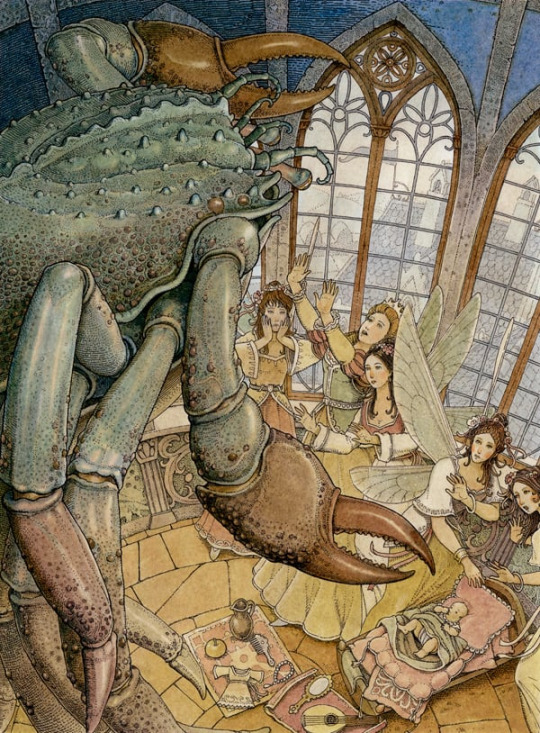
1 ) Despite this being one of the most famous and reprinted fairytales of d'Aulnoy, The White Doe/The Hind in the Woods is one of the more dated of these stories. Not just because of the problematic racist elements of "princess Black of Ethiopia", but also because this story was clearly written in honor and reference to the king of the tme, Louis 14. When the fairies create a palace for princess Desired to live into until her fifteenth birthday, and have inside of it the whole history of the world depicted by art pieces, d'Aulnoy breaks her narration to describe in a poem form the "greatest and most brilliant warrior king of History", who is not named but is very clearly Louis XIV. Earlier, when the queen visited the six fairies' palace, the fairies told her that to build it they hired "the architect of the Sun", who basically recreated "the Sun's palace" but in smaller proportions. This is an obvious reference to Versailles, the wonderful castle of the "Sun-King", Louis 14. And if this wasn't enough, there are also several explicit comparisons to an actual historical event contemporary to the story: a royal wedding. Several times throughout the narration, d'Aulnoy says that the beautiful clothes or gorgeous outfits of Desired are identical with or "right behind in term of beauty" to the outfits and jewels worn at a "certain princess" wedding. These are all comparisons made to a certain woman named Marie-Adélaïde de Savoie, who had just married the duke of Bourgogne, aka... Louis XIV's grandchild.
All of this makes the story feel very NOT "intemporal" since, if you don't have the historical context, all those moments seem a bit weird and mysterious. And yet, this fairytale stayed one of d'Aulnoy's most popular ones... My guess is that what seduced people in this story was the imagery it brought rather than the story or writing itself. People's mind and imagination were struck by the supernatural white doe a prince cannot capture, by the visual of this monstrous crayfish terrorizing a queen and fairies by cursing a baby, by the idea of a beautiful girl doomed to live in the dark until her fifteenth birthday...
In fact, the way madame d'Aulnoy writes this tale to celebrate the royal wedding might explain why the main protagonist here, Desired, has such a young age - barely fifteen. Because Marie-Adélaïde de Savoie, upon being wed to Louis XIV's grandchild, was only twelve... [Note however that madame d'Aulnoy did not condone or enjoyed at all child-weddings of this sort - she herself had suffered from an atrocious arranged wedding in her very early life, and this ended up in a complicated business of manipulations, false accusations, exiles and murders - but when you live in 17th century France, you better be a propagandist of the king, especially if you are a woman who tries to write fiction.]
2 ) The beginning of the fairytale is obviously to put in parallel with Perrault's Sleeping Beauty. Same "gift-giving christening by the fairies" scene, the same way the older and more powerful of the fairies arrives to curse the babe only to have her curse "eased" by the others, the list of gifts offered by the fairies being quite similar to the one of the Sleeping Beauty fairies - more explicitely, in the beginning of Sleeping Beauty it was explicitely said the queen visited/tried several miraculous/healing waters to try to have a baby - which is what the queen does in the beginning of this tale, except here it becomes the start of the plot.
3 ) While there is still the manichean divide typical of French literary fairytales of "good fairy and wicked fairy", here d'Aulnoy plays deliberately on the fairies ambiguity, to show that despite acting by a binary pattern, fairies stay a "gray" set of beings. For example, the Fairy of the Fountain or Crayfish Fairy, despite being one of the main antagonists, starts out in the story as a helper and a benevolent force - and in a twist, still does fulfill her role of "good fairy godmother"... but she does so to the princess Black, who is an unwilling/accidental antagonist to the hero of the tale. (A similar process, where the antagonistic fairy is just the fairy godmother of someone other than the hero, was already used by d'Aulnoy in several of her previous fairytales, including The Blue Bird). As for the six benevolent fairies, while they are all good and nice throughout the story, the narration still highlights that they have two sets of chariots, and that when angered they drive the dragons, snakes and panther-driven chariots, hinting that while they are here helpers they can become antagonists in other stories.
4 ) While there is all the racism I talked about before, it is quite interesting to see here that we have two "anti-portraits" of ugly women, meant to oppose Desired's supreme beauty, two anti-portraits that actually help us understand the beauty criteria at work in this end of the 17th century of France. For Princess Black, we see that her ugliness comes from a "dark skin", "big lips" and a "crushed, large nose" - which are, beyond traits typically "African connoted", the opposite of the French ideal of women with very pale skin, very small noses, very thin lips. But in contrast, we also have Long-Thorn who presents another set of flaws. Just like princess Black there is the nose - here too red and too hooked - but beyond that we also have added poor teeth hygiene (Long-Thorn has black and unaligned teeth), and more interestingly a body too tall and too skinny. In general, when it comes to ugliness d'Aulnoy typically invokes smallness/dwarfism or fatness/obesity, but from time to time she also insists that when a character is too tall or too skinny, they also are ugly. Because in this time era, while they wanted women tall, they still didn't want them as tall as men, and there was still a certain "interest in the curve" as without being very large or big, women needed to be plump and fleshy enough to have a body to appreciate (a bony and skinny body was not a beautiful one at the time). Of course, no need to remind you that this was a set of aristocratic ideals - because only the noble and the rich could afford to be chalk-white and "pleasantly plump".
5 ) People have noted that, funnily, the way prince Warrior falls asleep in the woods after eating apples he found there looks like a "male Snow-White". It is quite interesting because, while there probably wasn't a Snow-White reference (since it is not a typically French tale), madame d'Aulnoy had the very Christian background and culture of the apple as the "forbidden fruit" with the whole Garden of Eden story. Which leads to an interesting point...

6 ) This fairytale is a sexy tale. It is not an overtly erotic fairytale, no, but there is an obvious VERY romantic if not sexy if not erotic connotation. This however only appears in the second half of the story, when Desired becomes the White Doe. Desired, turned into a prey, and Warrior, improvising himself a hunter, those two lovers, find themselves reunited deep into the woods (the uncivilized, savage, wild world) after purposefully leaving or fleeing their respective courts (the forest is noted to be filled with dangerous predatory animals, such as bears or lions). Warrior hunts down the White Doe, not knowing that she is the girl he is in love with and obsessed over - though he also grows a fondness, familiarity and love for this white doe. And all the while, the White Doe recognizes her hunter as the one she is in love with, and having to flee from him for her life is said to be just as painful as if she was actually hit by his arrows... Madame d'Aulnoy clearly plays here on metaphors and allegories to weave a whole "game of love" or "love as the hunt", "hunt as the love" section. Warrior hunting for the White Doe, the White Doe making sure she can be hunted while never letting herself be caught, it all evokes a bizarre game of seduction. Warrior clearly treats the Doe as more than a simple pet, claiming he "loves" it and wants it to follow him everywhere and to live with him. When the Doe tricks Warrior to escape him, and Warrior complains to his friend, Becafigue jokes about the situation being like an unfaithful woman cheating on her lover - but the prince answers his joke absolutely seriously. And of course, it is after the prince and the princess spend the night together, sharing their love, in human form, that the spell is broken... [Note: In my previous recap I might have written things backward, saying the spell is broken when "night comes and nothing happens". It is the reverse - they talk all ight long together, and as the morning comes she doesn't transform. Sorry about that.]
Beyond the general image, if things weren't clear eough d'Aulnoy keeps addng little details that make the story even more erotic - almost scandalous. The apple section I mentionned - prince Warrior eating apples in the woods before falling deeply asleep reminds of the first human consuming the "forbidden fruit", and it is when the White Doe dares sleep near him for the first time. When the prince catches the Doe or tries to "woo" it with gifts, it is said he keeps petting it, hugging it, caressing it, kissing it - as a pet, as an animal of course, but we reader know that there is a human woman underneath this doe skin, and so the erotic content cannot be escaped. ESPECIALLY when it is said that, after running from each other all day long, both return to their respective bedrooms "sweating and panting, exhausted by the time they spent together". And don't even get me started on how the prince ends up, to conquer and tie up the doe, hitting her with a single arrow in the leg, making her bleed... This is not a fairytale safe for kids.
7 ) Speaking of love, I did not mention it in my recap, but this fairytale is one of the rare ones of d'Aulnoy to have a moral in the end. To summarize it, d'Aulnoy explains that "With the story of this princess that wanted to leave too soon the dark place a wise fairy placed her in to hide her from the sun's light - and the metamorphosis and misfortunes that resulted from it - you will find an illustration of the dangers to which a young beauty exposes herself when she enters too young, too unprepared in the world. If you were gifted with all the traits and qualities that attract love to you, you better know how to hide them, because beauty can be deadly. If you think that by making others fall in love with you, you will shield yourself from love, well know that by giving too much, you always end up taking." So yes, long story short, this is meant to be more than just a fairy love story, but a warning for girls that too young, too beautiful, too unprepared, throw themselves in the world of love, adult and serious romance, and have to be confronted with the many dangers in it.
8 ) On a more "traditional love story" side, this fairytale accumulates ALL the story devices typical of romances of the type to avoid having the two lovers meet each other. In fact, this is the entire point of this story, the apex and climax and culmination: when princess Desired and prince Warrior can finally see each other in person, and talk to each other. At first you had the exchange of portraits and the sending of ambassadors, then you had the fake princess Long-Thorn hijacking the planned meeting, then the two lovers finally got under the same roof, but not only ignored each other's existence, even when meeting each other they didn't recognize themselves thanks t the doe curse... So when they finally see themselves as humans and touch each other as humans and talk a full dialogue, the story is complete and the curse is broken

9 ) Note however that despite the seemingly virtuous and chaste moral added at the end, madame d'Aulnoy does write the character of a more proactive and manipulative princess that "plays" her male lover. It is she that is happy with his caresses and petting and allows herself to be "touched" of the sort, and it is she that sneaks up by her lover's asleep body, and again the terms of the curse are clear - by day she is forced to become a beast, and to do as beasts do, aka to wander in the woods, aka to return to the world of savagery, primal desire and bestial behavior. On the other side, something that might escape a reader at first glance is that prince Warrior is not supposed to be a "prince Charmng" of the traditional genre. As I said, we are inside d'Aulnoy's second book of fairy tales, and so she reached a point where she plays with the conventions of the genre. In the whole hunt story, we have a brutal lover who tries to kill, seriously wounds though he heals it afterward) and ties up with knots his lover, treating her like a prey and a beast (well, because she IS, but you know) - and there is also the use of the peep-hole by Becafigue that solves the whole problem indeed, but by the undignified way of spying into women's bedrooms (Becafigue had already a not so good behavior when he acted as Warrior's ambassador, encouraging Desired's parents to ignore the "powerless" and "silly fairies" and disobey Tulip's warnings - and in the world of fairy tales one should NEVER underestimate the power of fairies)
But that's just for the second part of the story. In the first part, prince Warrior's behavior is also to be criticized. In fact, it is quite ironic that he is called "Warrior" and introduced as the winner of "three battles", because the first part of his character act has him acting as un-warrior, if not un-manly as possible. He becomes a love-stricken mess, he locks himself in his room talking to a portrait, he despairs of not being able to be with his love, he spends his day dreaming, and doing nothing, and wasting away, with no appetite for anything, making himself sick over lethargy and depression - and so fragile that he can't even wait three months for his loved one to come without fearing he would die. And even worse, when his hopes and dreams of love are crushed, he acts as a selfish coward by simply abandoning his parents, his throne, his court and duties, leaving secretly at night with just one letter behind to explain everything to his parents, and isolating himself from the world in desire to just cry on his own fate forever in some isolated place... We've got some emo teen in love vbes here.
10 ) This fairytale is very "medieval" like in tone. Beyond the "fairy christening" scene that is reused everywhere ever since Perrault and inherits from similar medieval scenes, a la Perceforest, the entire topic of the hunter going after a supernatural, white animal he cannot capture is an iconic topos of medieval literature. Typically this doubles or is tied to the hunter meeting some mysterious woman in the woods, preferably near a fountain, who might take him to a wonderful palace - but this happens rather to Desired's mother, who meets a fairy at a fountain, and is then taken to the six fairies' magical castle.
11 ) In terms of folkloric inspiration, if we use the Catalogue Delarue-Tenèze (a local form of the ATU Index but exclusively covering French fairytales), this story is clearly a literary take on the story type 403, "The substituted fiancee", "The fake fiancee". More specifically, it is a literary take on the 403-B (characterized by the metamorphosis of the real fiancee replaced by a fake one), though there is one element typical of the 403-A (the fact that the prince falls in love with a portrait). While inspired by it, madame d'Aulnoy clearly adds several purely literary elements that make this story very unique. For example the scene of the "fairy-gifts" and the "fairy-curse" at Desired's birth, or the presence of a first fiancee for the prince in the person of the princess Black, two elements united by the character of the Crayfish Fairy or Fairy of the Fountain - this all comes from d'Aulnoy's mind, and is traditonnaly not found in French folktales. And this was clearly placed here only to complicate the originally straightforward story into something much more focused on a "twist-and-turn romance".
#the white doe#the hind of the woods#french fairytales#literary fairytales#french fairy tales#madame d'aulnoy#d'aulnoy fairytales#fairytale analysis
122 notes
·
View notes
Note
LOL. There is an article about the supposed birthday party held for the girl this past weekend. While discussing L's first birthday and Christening, it's another article that is filled with vaguely worded sentences like "It is understood" and "Those who were said to be in attendance" because there is no actual proof that anyone from Harry's family had anything to do with any of it. They also like to hint that the Spencers are very involved with the kids, as if they're flying out to CA on the regular with no one noticing. It's one of the many reasons they keep things with the kids "private" because the more they talk about them the more everyone can see how sad it is that the best they can manage is to have Misan and a bunch of acquaintance show up for their events.
My theory is that People Magazine became aware there was a party of some kind at Montecito Mansion but that's all they could confirm.
Archived Link
This statement from the article fascinates me:
In March 2023, PEOPLE exclusively revealed that the Duke and Duchess of Sussex were using their children’s royal titles through the news of their daughter’s christening announcement.
Because how on earth are Harry and Meghan using their kids' titles in daily life out there in California? Do you think they've instructed the schools to call them Prince Archie and Princess Lili? (George, Charlotte, and Louis don't use their titles at school.) Do they get birthday party invitations addressed to Prince Archie and Princess Lili? Does Meghan call them to dinner as Prince Archie and Princess Lilibet Diana? Do they write Prince Archie and Princess Lili on their Christmas presents?
Did Harry upgrade his padfolio to say Prince Archie's Papa?
I mean, these are important questions. The public deserves to know!
Also, People Magazine confirmed today that Harry and Meghan weren't invited to Trooping and will not be going. (Archived Link) This makes me think it'll be the smaller balcony we've seen the last few years since they're not making a fuss about it.
25 notes
·
View notes
Text
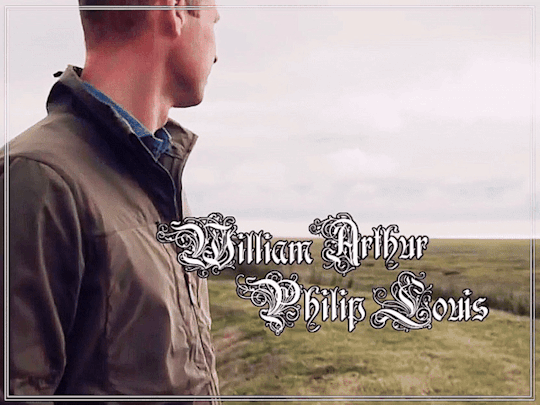






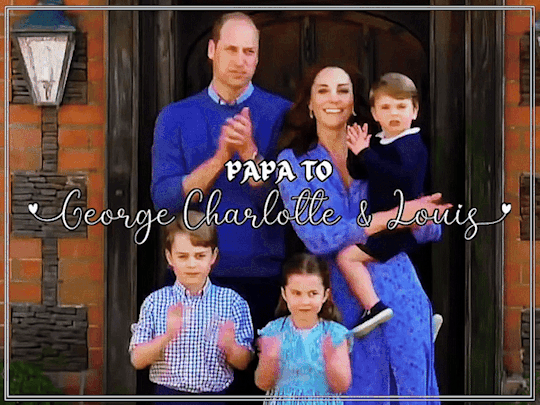


HAPPY 42ND BIRTHDAY TO HRH THE PRINCE OF WALES, WILLIAM ARTHUR PHILIP LOUIS ♡
On 21 June 1982, Prince William was born to Diana and Charles, then known as Prince and Princess of Wales in St Mary's Hospital, London, at at 21:03 BST. He was born during the reign of his paternal grandmother Elizabeth II and was the first child born to a Prince and Princess of Wales since Prince John's birth in July 1905.
The little prince's name was announced on 28 June as William Arthur Philip Louis. Wills was christened in the Music Room of Buckingham Palace by the then Archbishop of Canterbury, Robert Runcie, on 4 August.
William studied at Jane Mynors' nursery school and Wetherby School in London before joining Ludgrove. He was subsequently admitted to Eton College, studying geography, biology, and history at the A-level.
The Prince undertook a gap year taking part in British Army training exercises in Belize, working on English dairy farms, and as part of the Raleigh International programme in southern Chile, William worked for ten weeks on local construction projects and taught English.
In 2001, William enrolled at the University of St Andrews, initially to study Art History but then changed his field of study to Geography with the support of the love of his life Catherine Elizabeth Middleton who he met while at school.
Will and Cat fell in love during their time at uni, and married at Westminster Abbey on 29 April 2011. The couple have three adorable cupcakes Prince George (b.2013), Princess Charlotte (b.2015) and Prince Louis (b.2018). The family of five divide time between their official residence, Kensington Palace and their two private residences - Amner Hall & Adelaide Cottage.
After university, William trained at the Royal Military Academy Sandhurst. In 2008, he graduated from the Royal Air Force College Cranwell and joined the RAF Search and Rescue Force in early 2009. He transferred to RAF Valley, Anglesey, to receive training on the Sea King search and rescue helicopter, which made him the first member of the British royal family since Henry VII to live in Wales.
During his active career as a Search and Rescue Pilot, William conducted 156 search and rescue operations, which resulted in 149 people being rescued. He then served as a full-time pilot with the East Anglian Air Ambulance starting in July 2015, donating his full salary to the EAAA charity.
Working with all branches of the military, he holds the ranks of Lieutenant Colonel in the Army, Commander in the Navy and Wing Commander in the Air-Force
Upon their wedding, WillCat became HRH The Duke and Duchess of Cambridge, The Earl and Countess of Strathearn and Baron and Lady Carrickfergus. He became the heir apparent on 8 September 2022, receiving the titles of the Duke of Cornwall & The Duke of Rothesay. William & Catherine were made The Prince and Princess of Wales by Kimg Charles on 9 September 2022. Additionally, William also became the Prince & High Steward of Scotland, Earl of Chester, Earl of Carrick, Lord of the Isles, and Baron Renfrew.
As well as undertaking royal duties in support of The King, both in the UK and overseas, The Prince devotes his time supporting a number of charitable causes and organisations with some of his key areas of interest being Mental health, Conservation, Homelessness, Sports and Emergency Workers.
He has undertaken several overseas trips representing the monarch, covering a wide array of countries like Australia, Canada, Namibia, Malaysia, South Africa, Tanzania, Pakistan Italy, Jordan, Kuwait, France, India, The Bahamas, Belize, Afghanistan etc ; He is also is also a founder of various initiatives like United For Wildlife, Heads Together, Earthshot and Homewards.
#happy birthday william ❤️#william's 42nd birthday#prince of wales#the prince of wales#prince william#william wales.#william prince of wales#british royal family#british royals#royals#royalty#brf#royal#british royalty#catherine middleton#kate middleton#duchess of cambridge#2024 wales birthdays#prince george#princess charlotte#prince louis#royaltyedit#royalty gifs#royalty edit#royaltygifs#my gifs#21062024
168 notes
·
View notes
Text
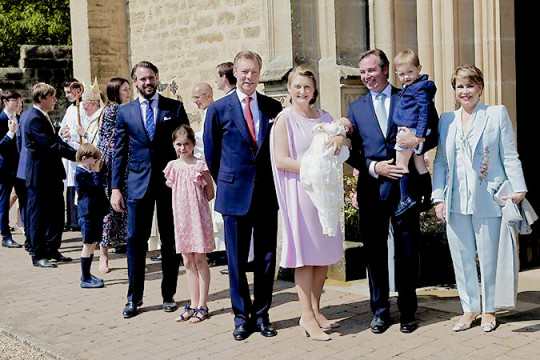


Grand Duke Henri of Luxembourg, Grand Duchess Maria Teresa of Luxembourg, Hereditary Grand Duke Guillaume of Luxembourg, Hereditary Grand Duchess Stéphanie of Luxembourg, Prince Charles of Luxembourg, Prince François of Luxembourg, Prince Félix of Luxembourg, Princess Claire of Luxembourg, Princess Amalia of Nassau, Prince Liam of Nassau and Prince Louis of Luxembourg attend Prince François's christening at the Church of Fischbach in Fischbach, Luxembourg -June 3rd 2023.
#grand duke henri#grand duchess maria teresa#hereditary grand duke guillaume#hereditary grand duchess maria teresa#prince charles#prince charles of luxembourg#prince françois#prince felix#prince felix of luxembourg#princess claire#princess claire of luxembourg#princess amalia#prince liam#prince louis#prince louis of luxembourg#grand ducal family of luxembourg#luxembourg#2023#june 2023#christening#christening 2023#prince françois of luxembourg's christening#royal children#my edit
11 notes
·
View notes
Text

9 July 2018 | Princess Charlotte and Prince George hold the hands of their father, Prince William, Duke of Cambridge, as they arrive at the Chapel Royal, St James's Palace, London for the christening of their brother, Prince Louis, who is being carried by their mother, Catherine, Duchess of Cambridge, in London, England. (c) Dominic Lipinski - WPA Pool/Getty Images
#Princess Charlotte#Prince William#Duke of Cambridge#Prince of Wales#Prince George#Prince Louis#Catherine#Duchess of Cambridge#Princess of Wales#Britain#2018#Dominic Lipinski#WPA Pool#Getty Images
9 notes
·
View notes
Text
✨ 15 days of Princess Anne ✨
August is Princess Anne’s birth month and her 73rd birthday is on the 15th so until then we will look at her fascinating life, one photo for every year!
The seventies
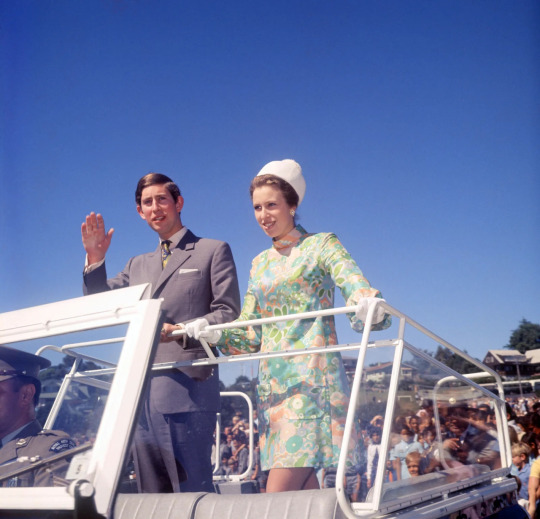
1970 Princess Anne with her brother Prince Charles in an open top car on parade during their tour of New Zealand, March 1970.

1971 Princess Anne with Crown Prince Harald and Crown Princess Sonja of Norway in June 1971.

1972 Princess Anne, Prince Rainier III of Monaco and Princess Grace of Monaco (AKA Grace Kelly) at the Opera de Monte-Carlo in Monte-Carlo, Monaco, 7th July 1972.
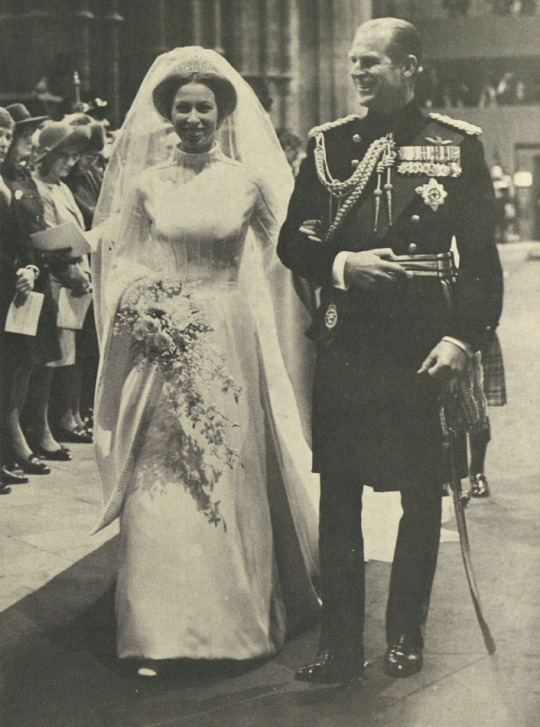
1973 Prince Philip walking his daughter, Princess Anne, down to aisle at her wedding to Mark Phillips at Westminster Abbey, November 14 1973. (Don’t do it Anne 🙈)
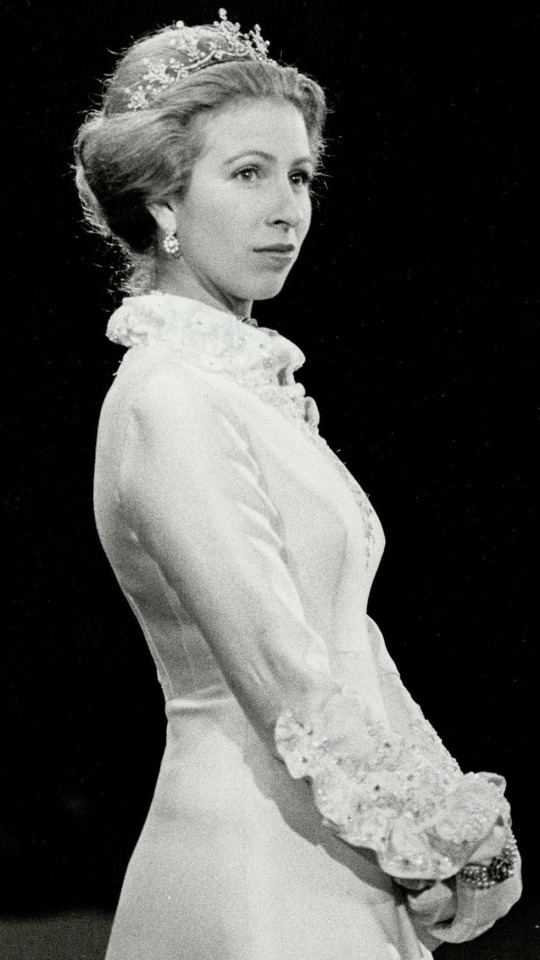
1974 Princess Anne, wearing the festoon tiara, inspecting the 48th Canadian Hussars whilst on tour of Canada, 15th November 1974.

1975 Princess Anne, Mark Phillips, Lord Louis Mountbatten and King Carl Gustaf of Sweden attending a banquet at Claridges, 10th July 1975.

1976 Princess Anne riding Goodwill, in the dressage class of the Montreal Olympics, July 1976.

1977 Princess Anne with her newborn son Peter Phillips on his christening day, 12th December 1977.
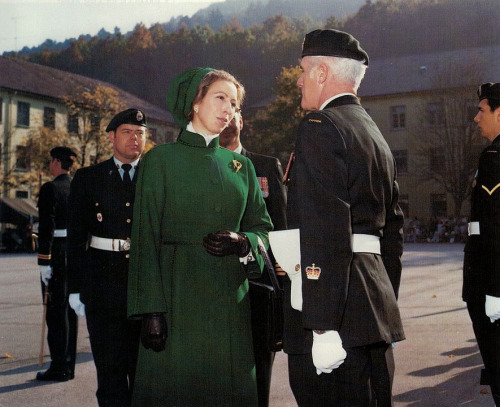
1978 Princess Anne visiting the 4th Canadian Mechanized Brigade Group Headquarters and Signal Squadron at Lahr, West Germany, 20th October 1978.

1979 Princess Anne and her mother Queen Elizabeth II, out riding their horses in the snow, during their New Year holiday at Sandringham, 2nd January 1979.
#15 days of anne#she is so fabulous 🤩#little peter 🥹#olympiAnne#so much happened in this decade!#princess anne#princess royal
79 notes
·
View notes
Text
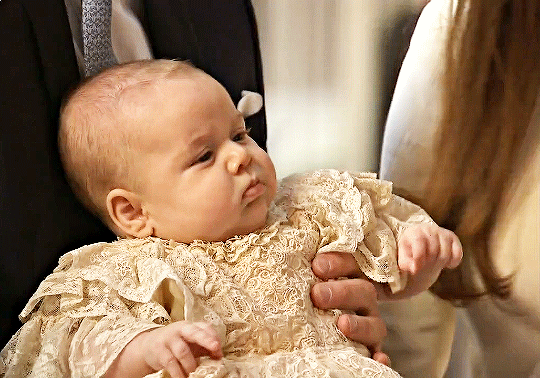
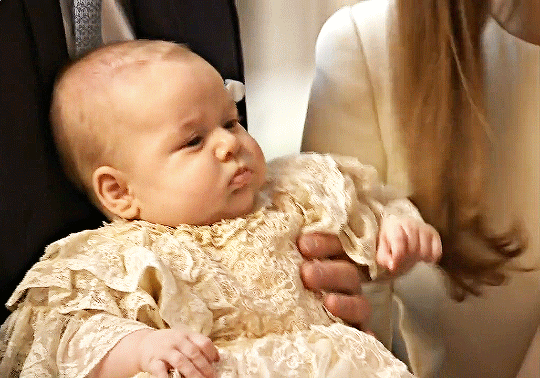
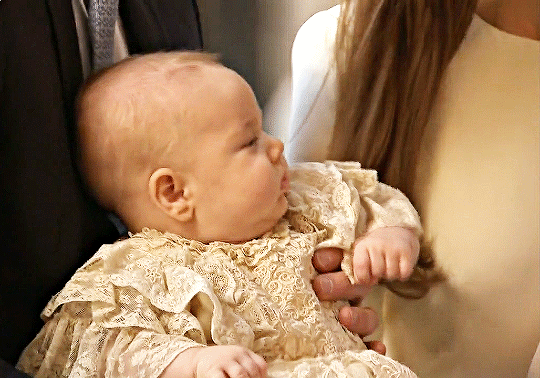


23 October 2013 Christening of Prince George Alexander Louis of Cambridge
74 notes
·
View notes